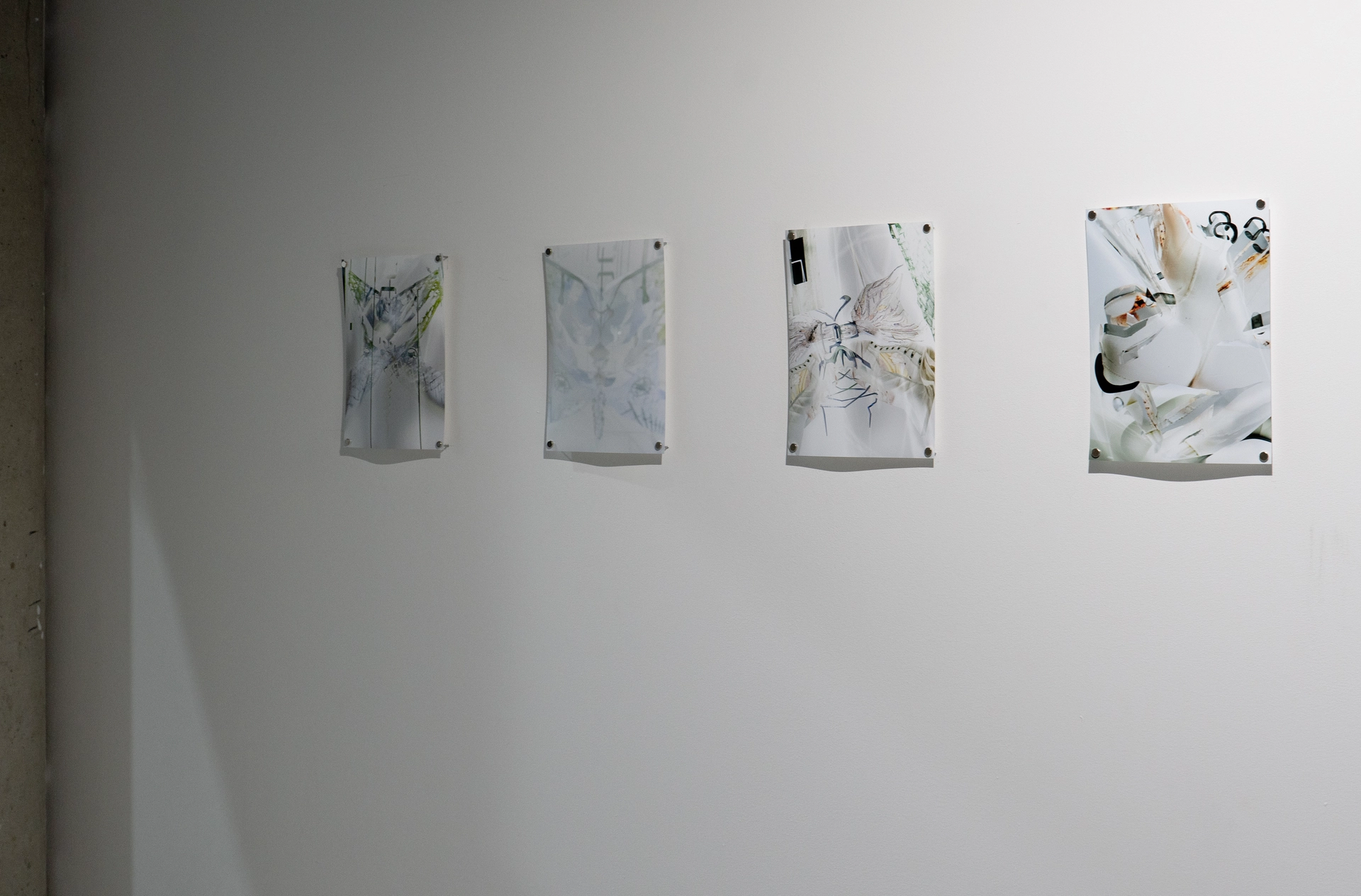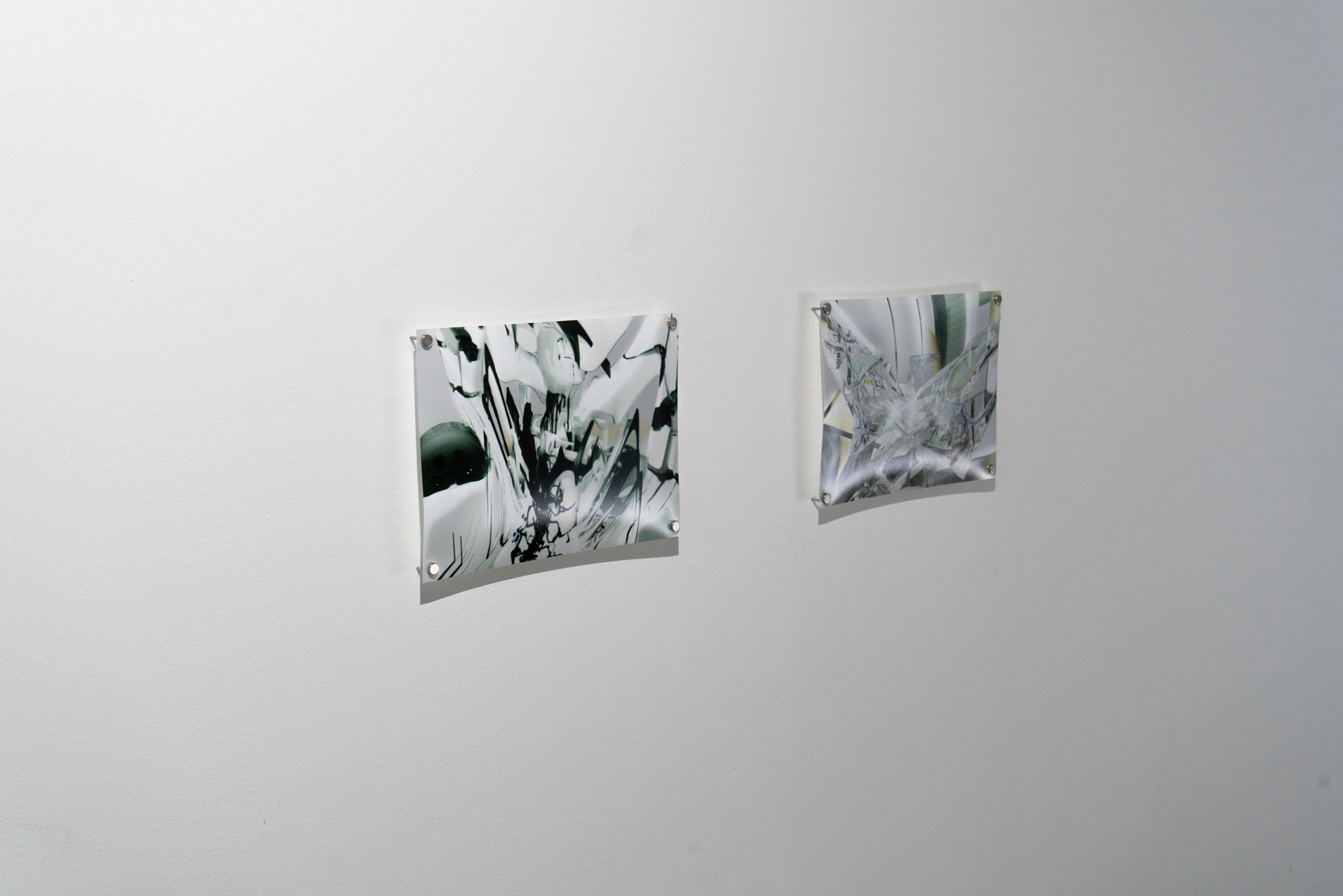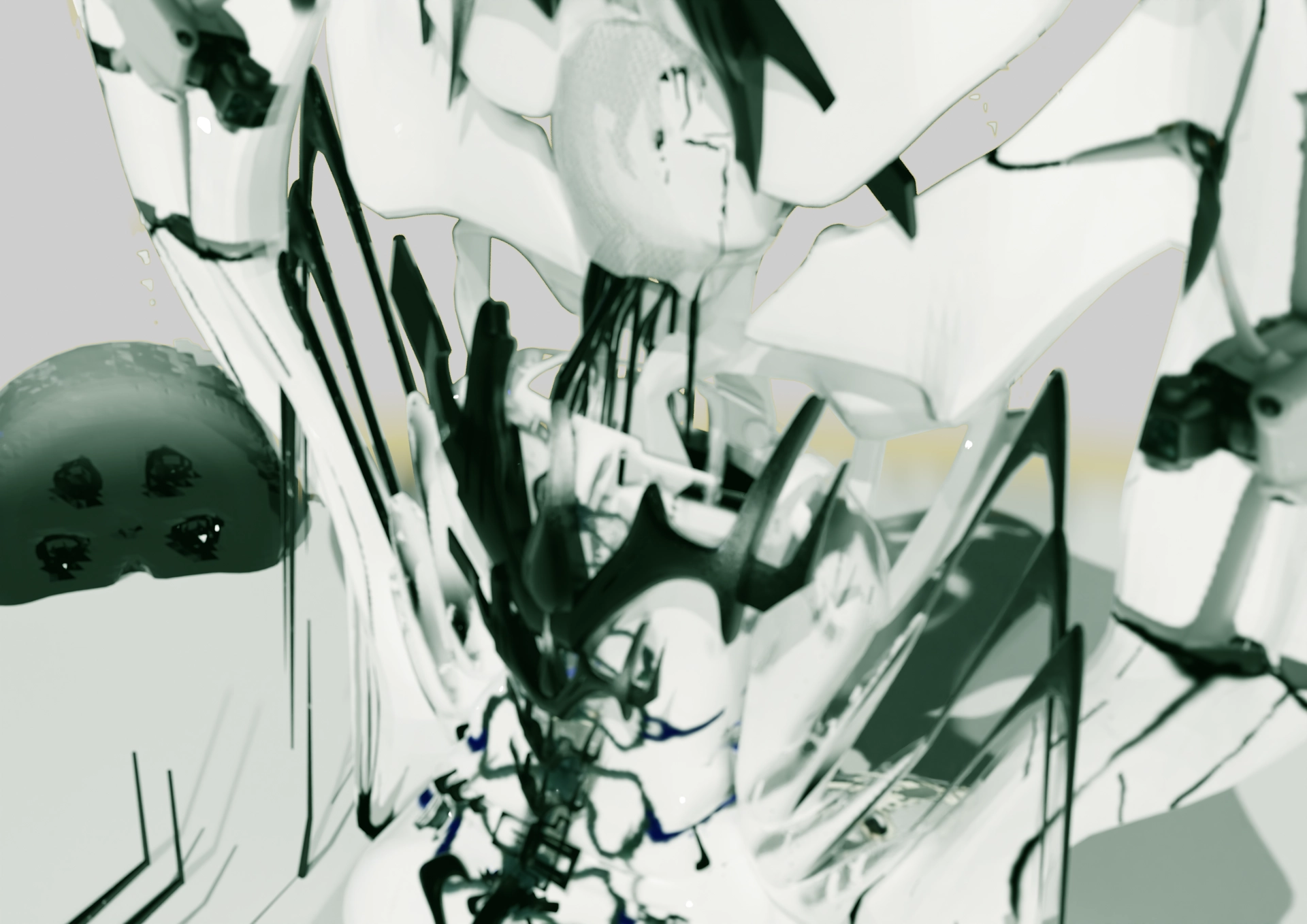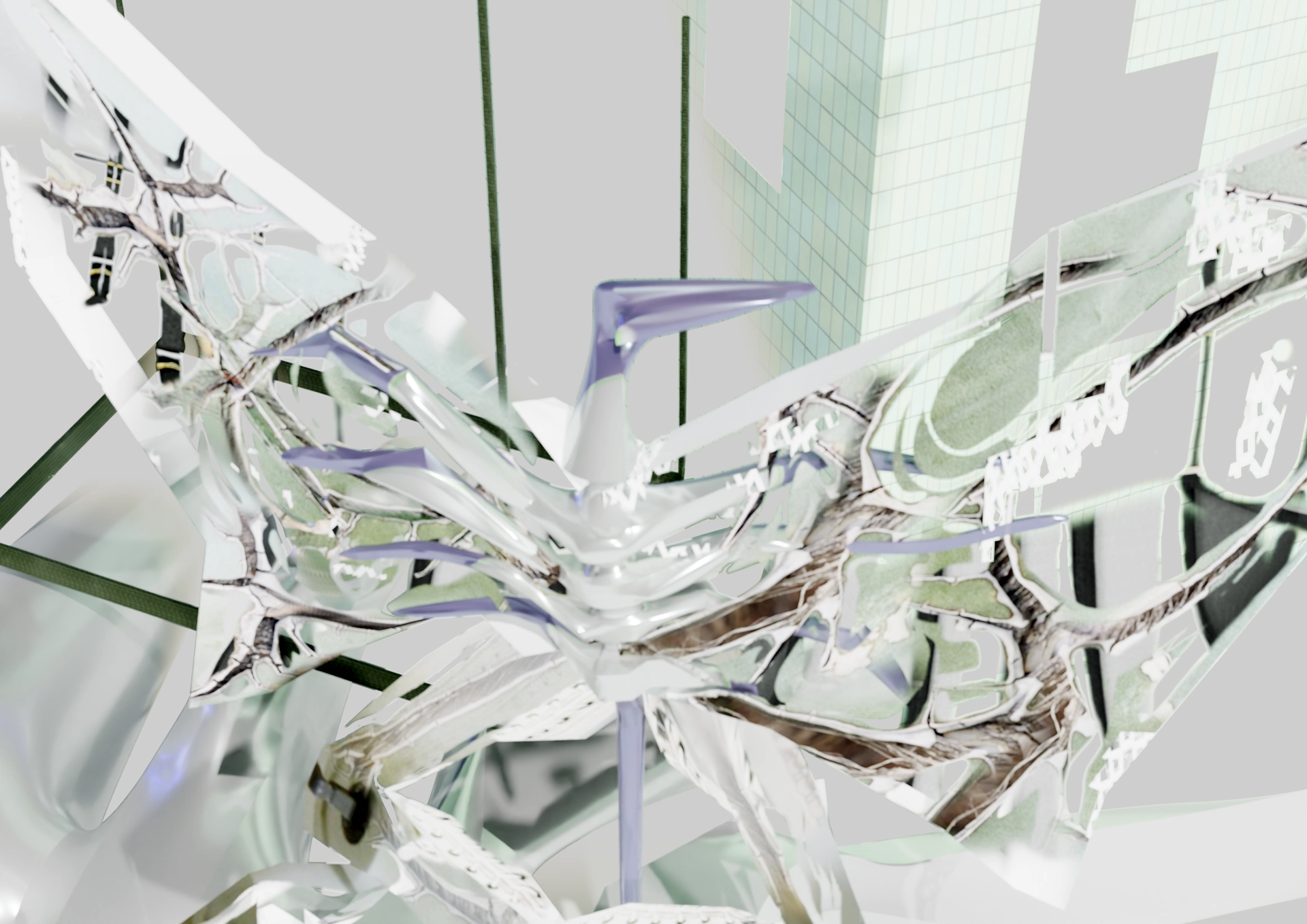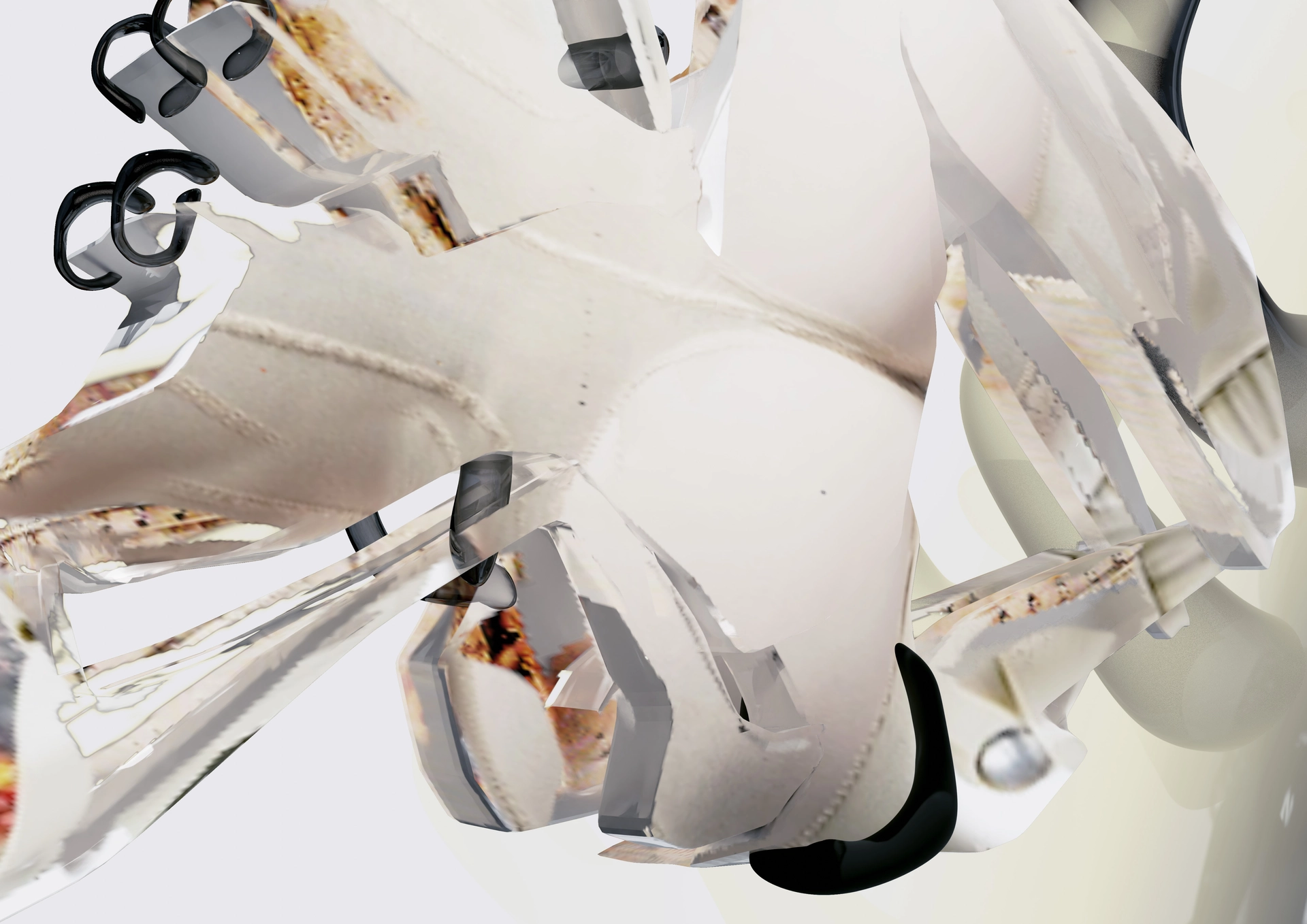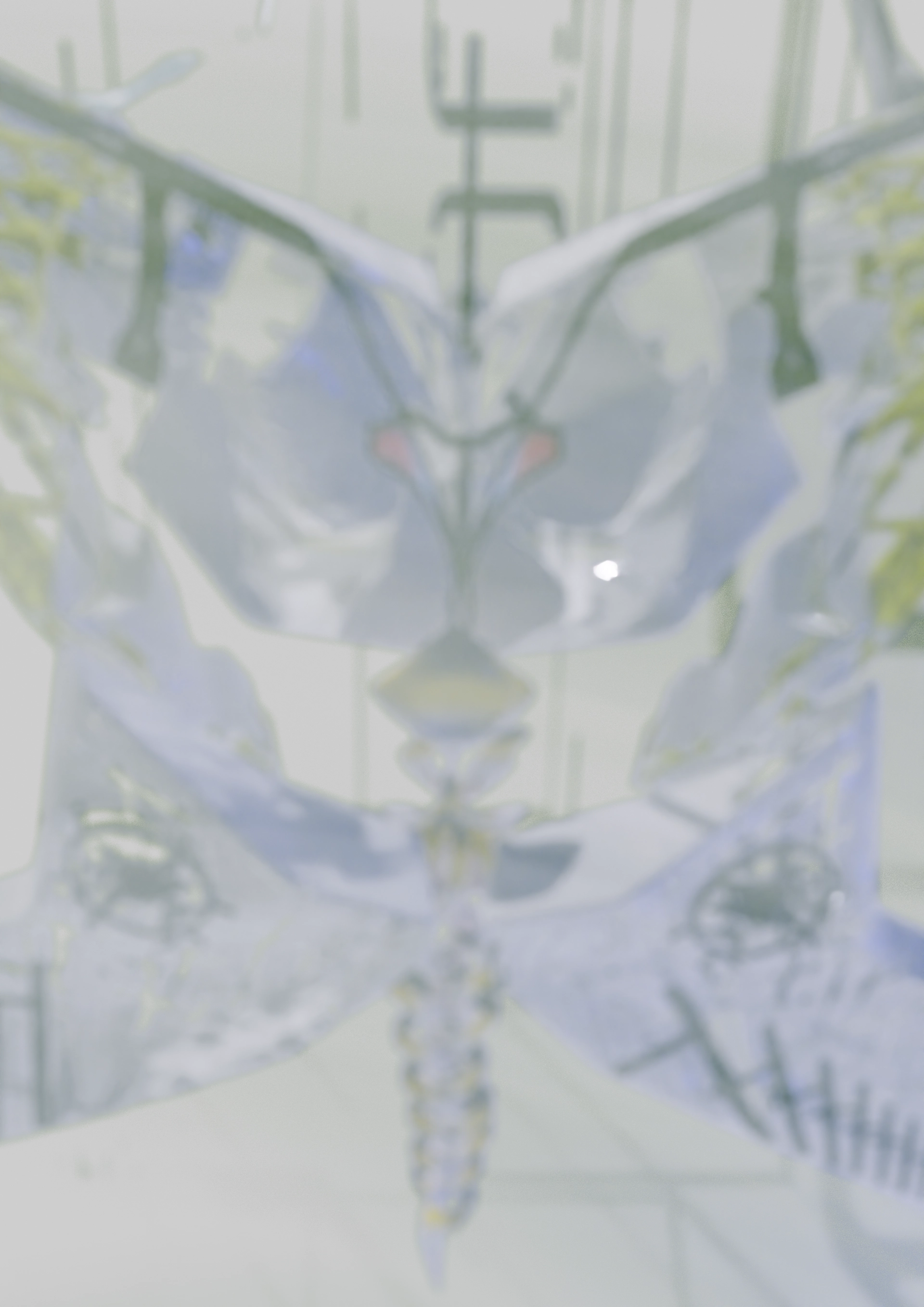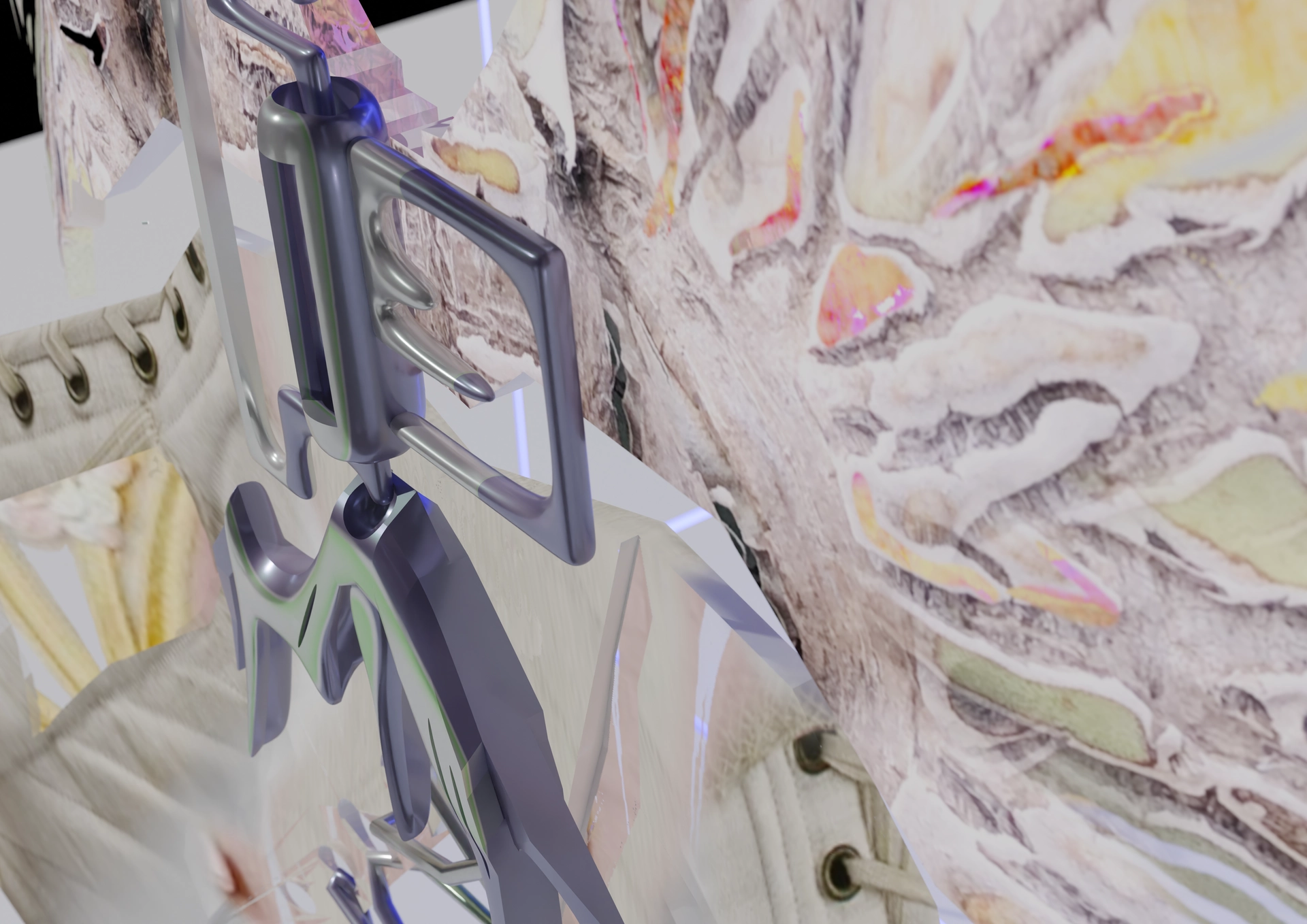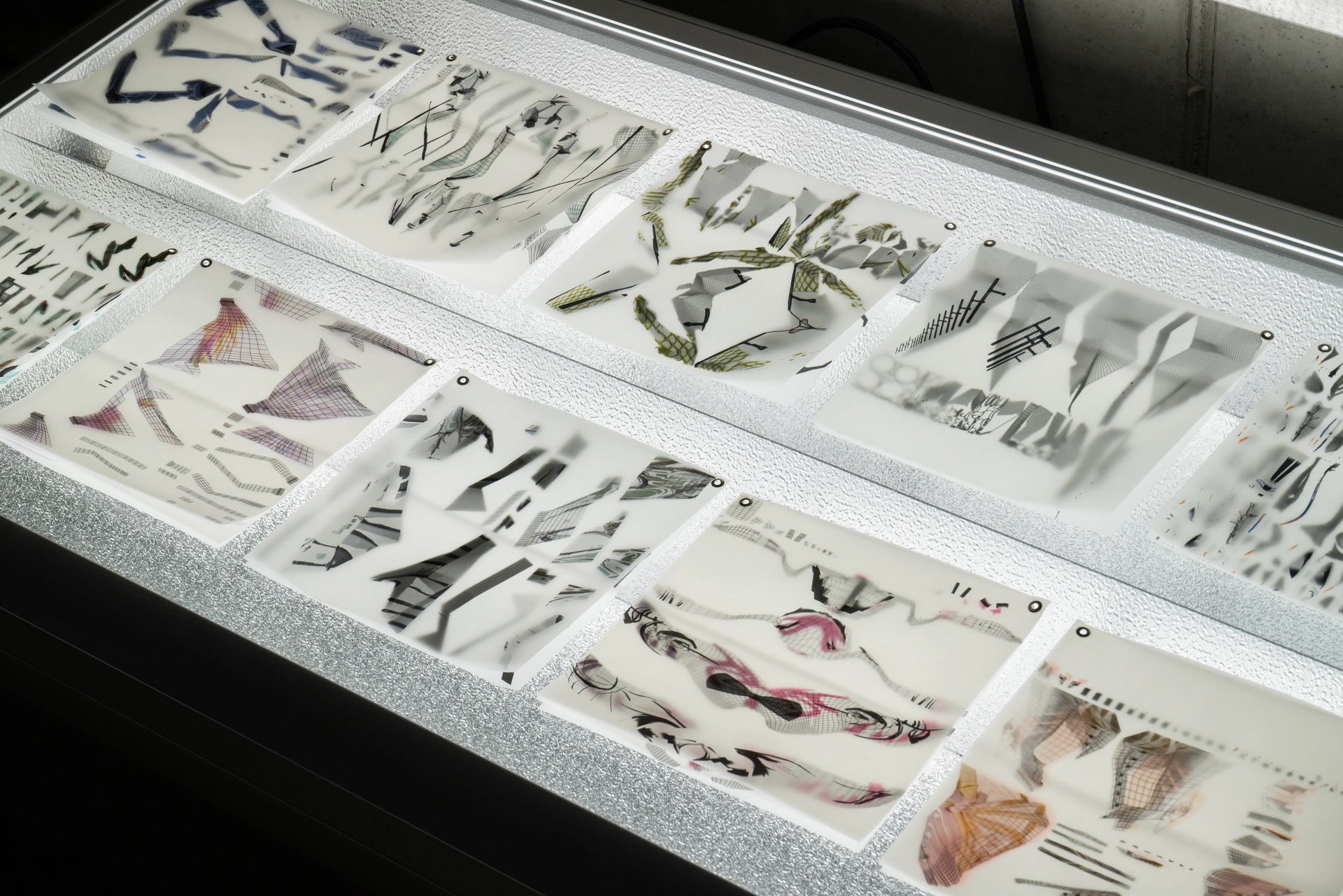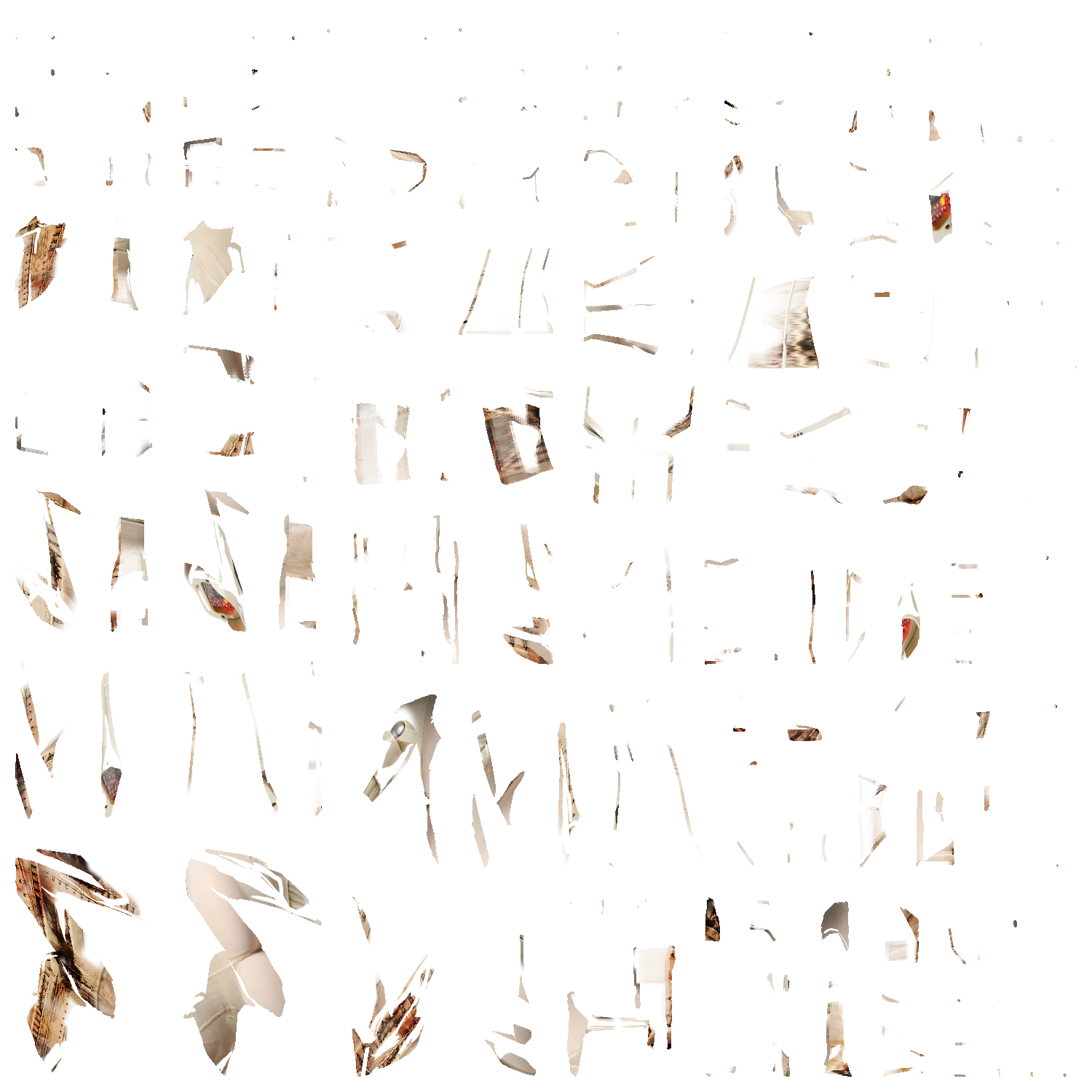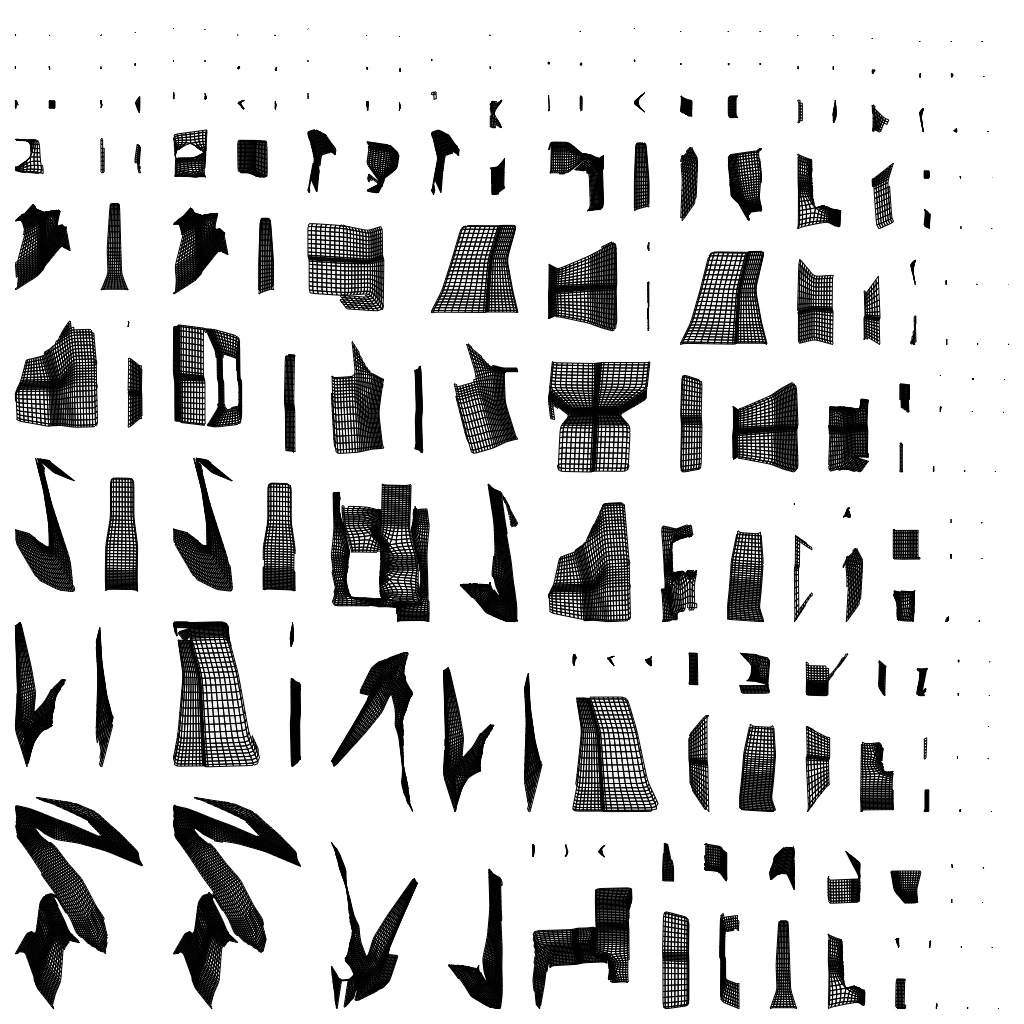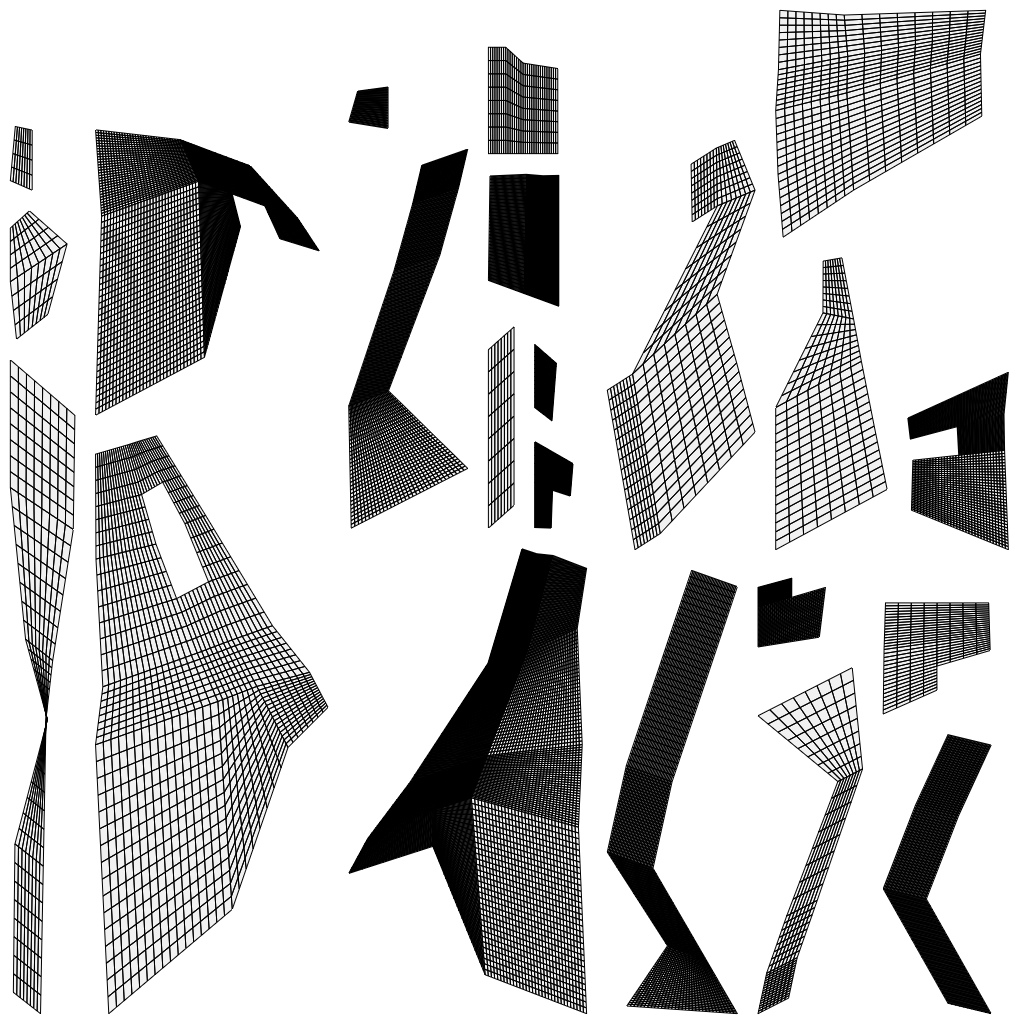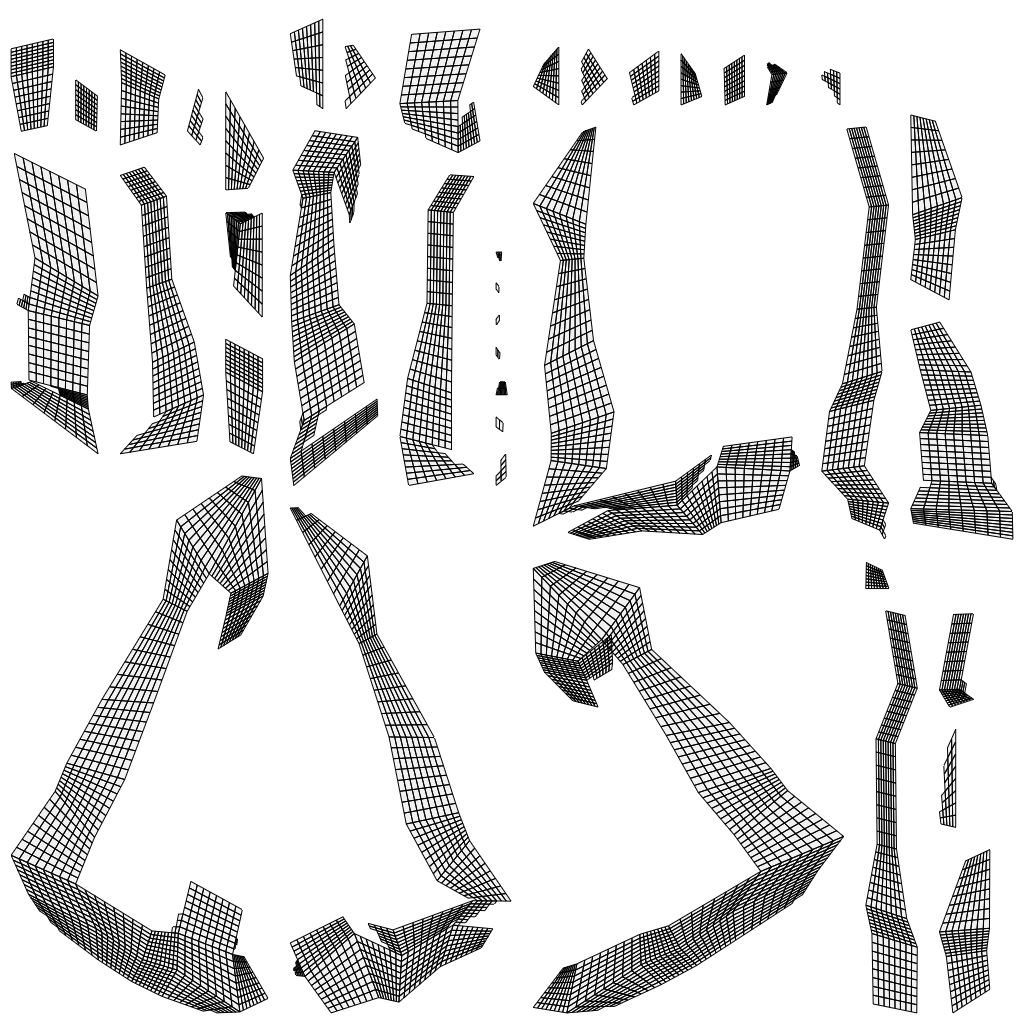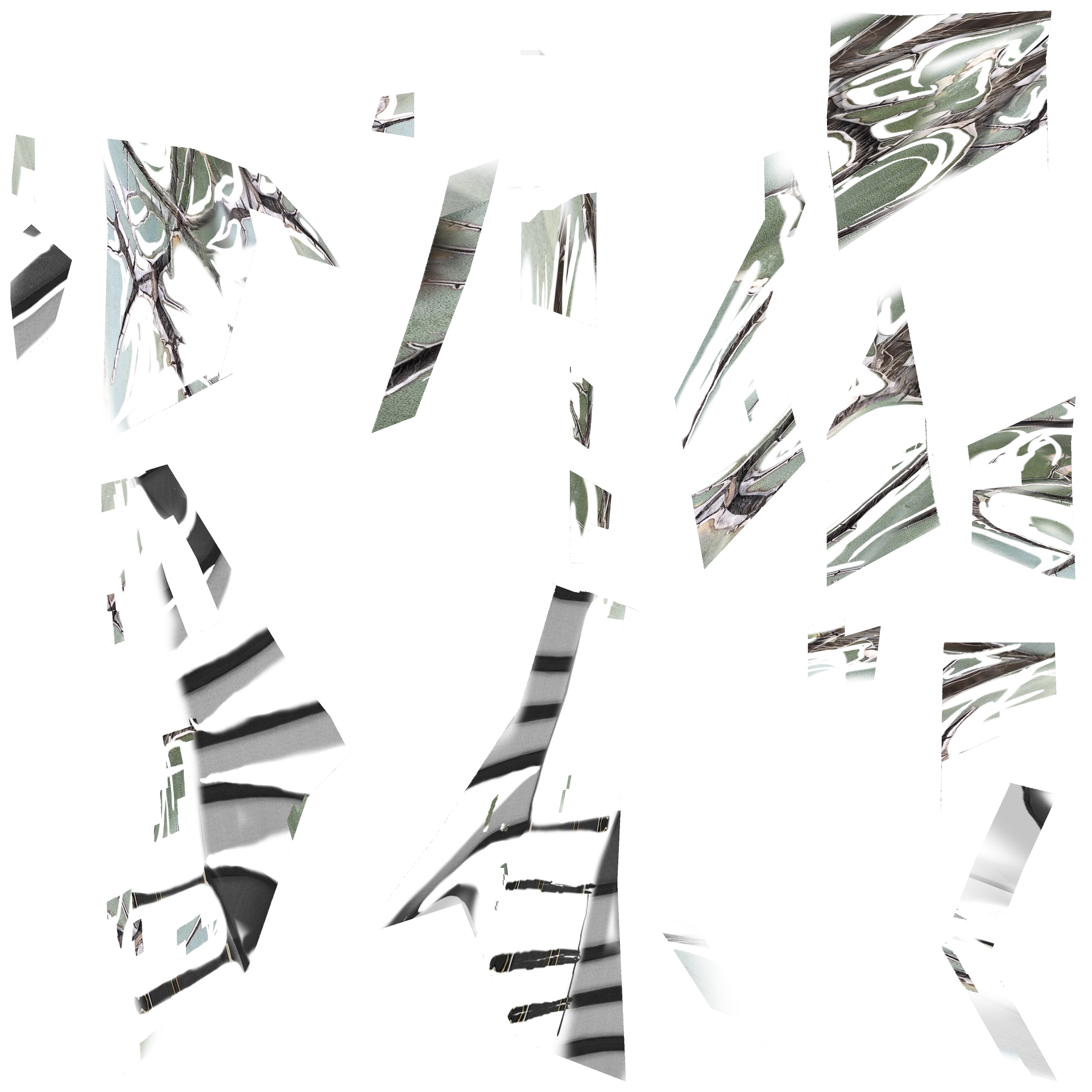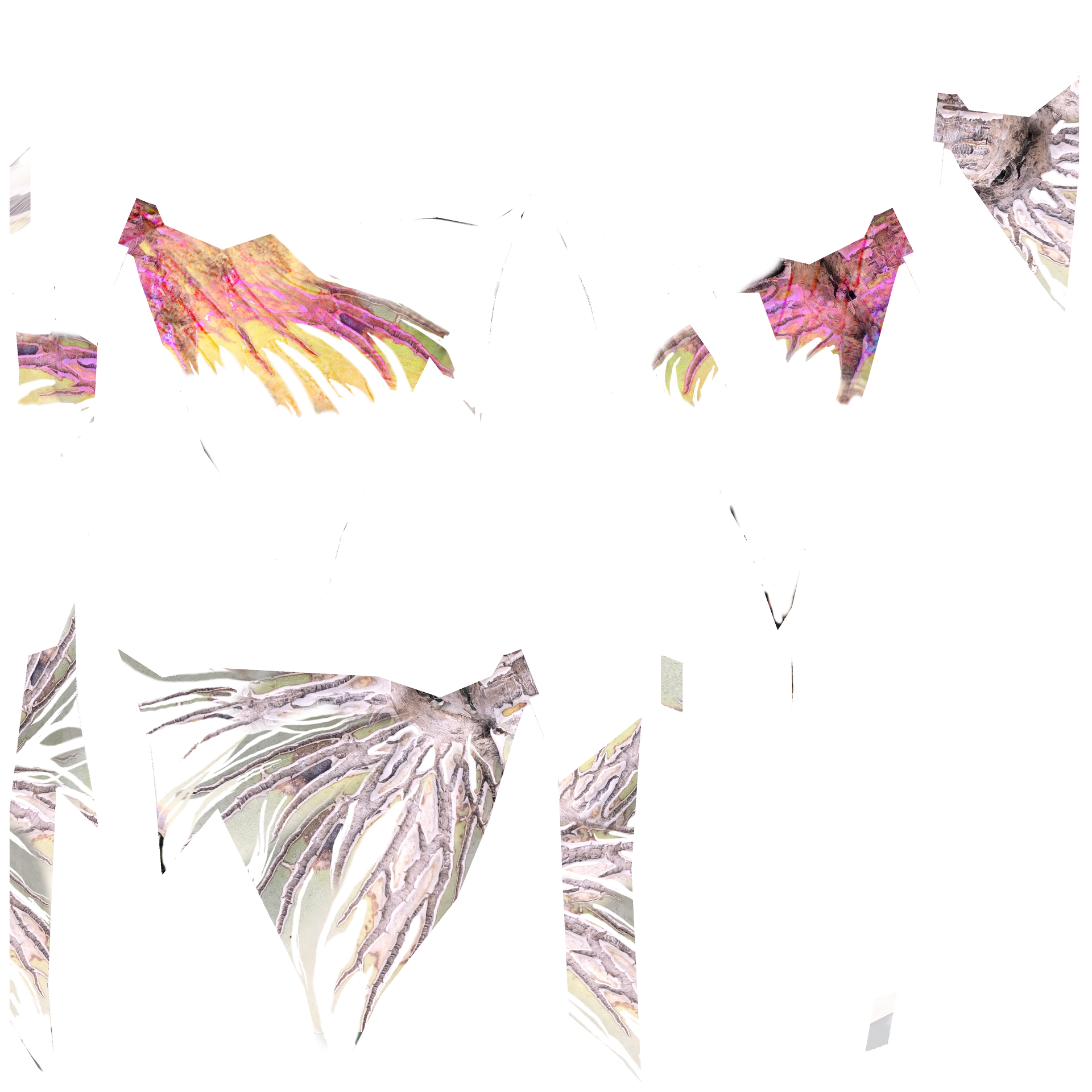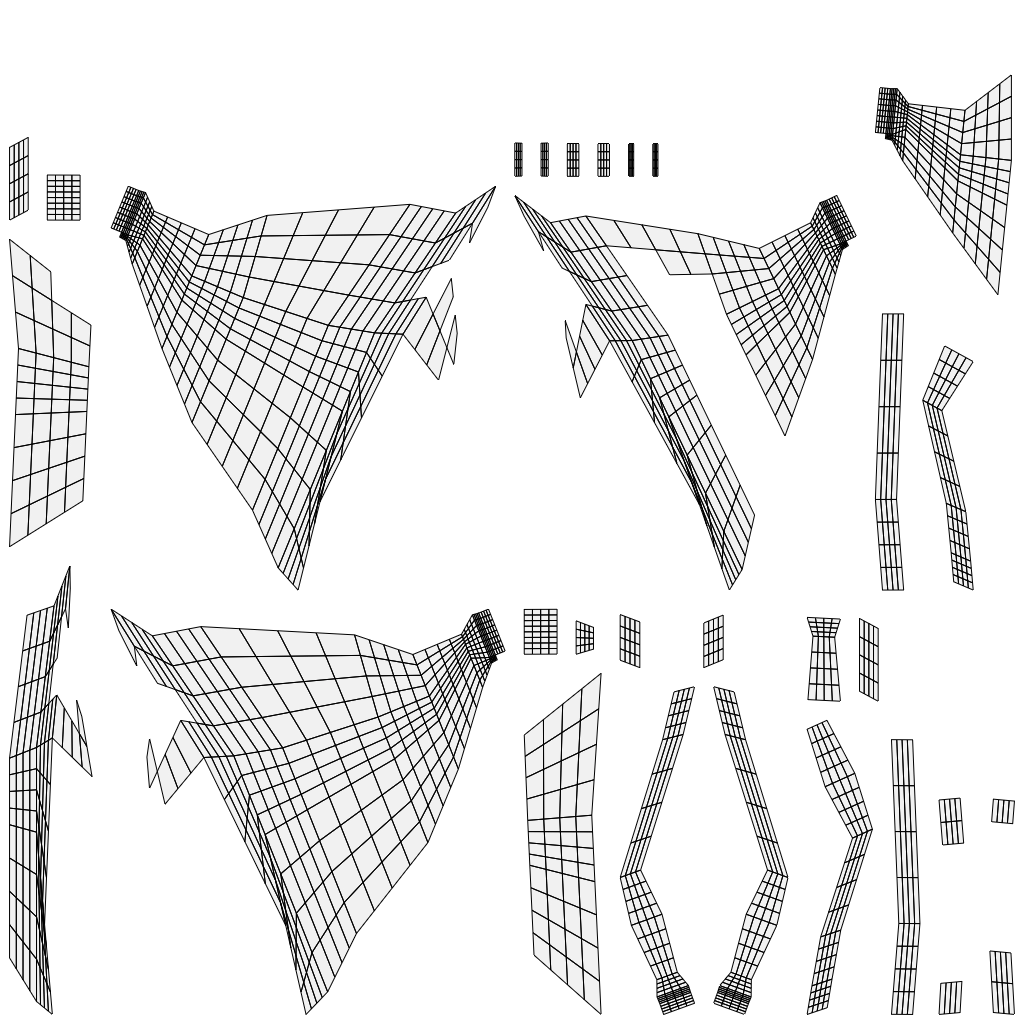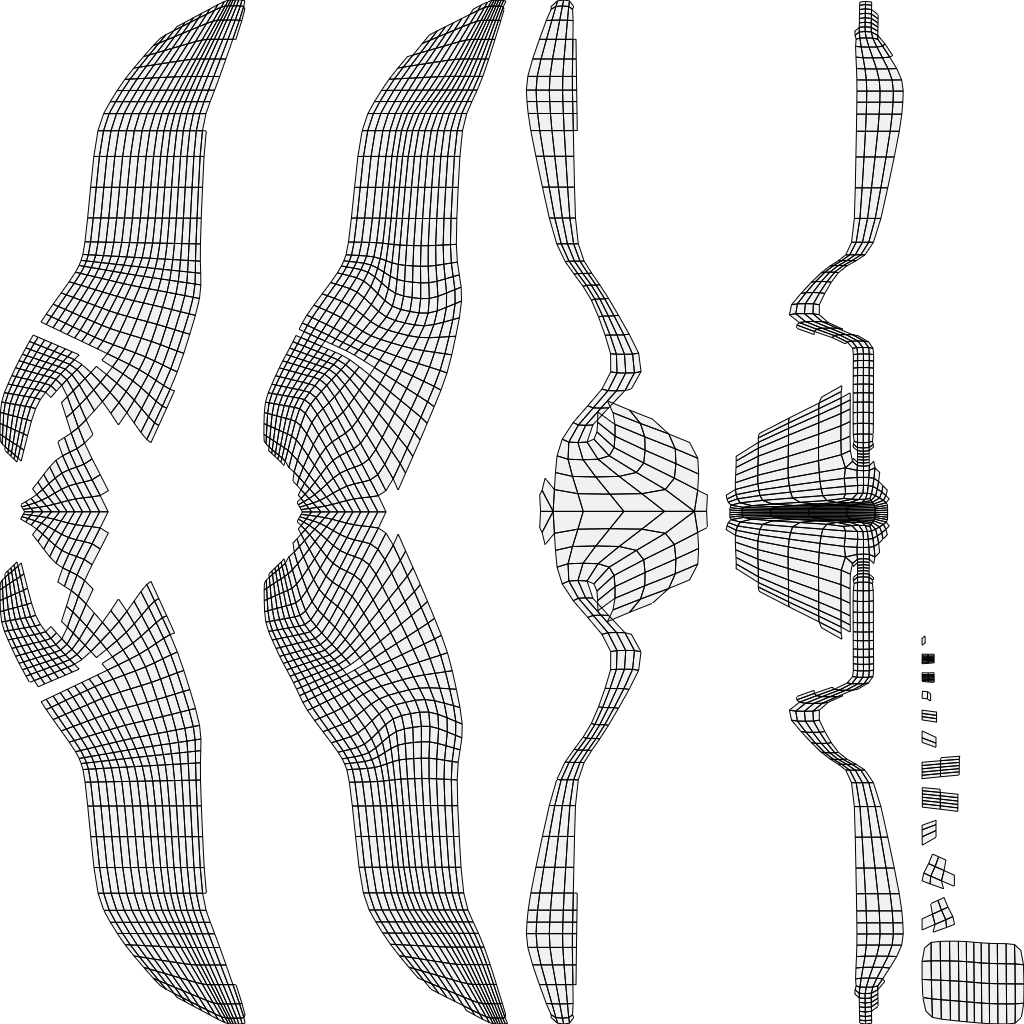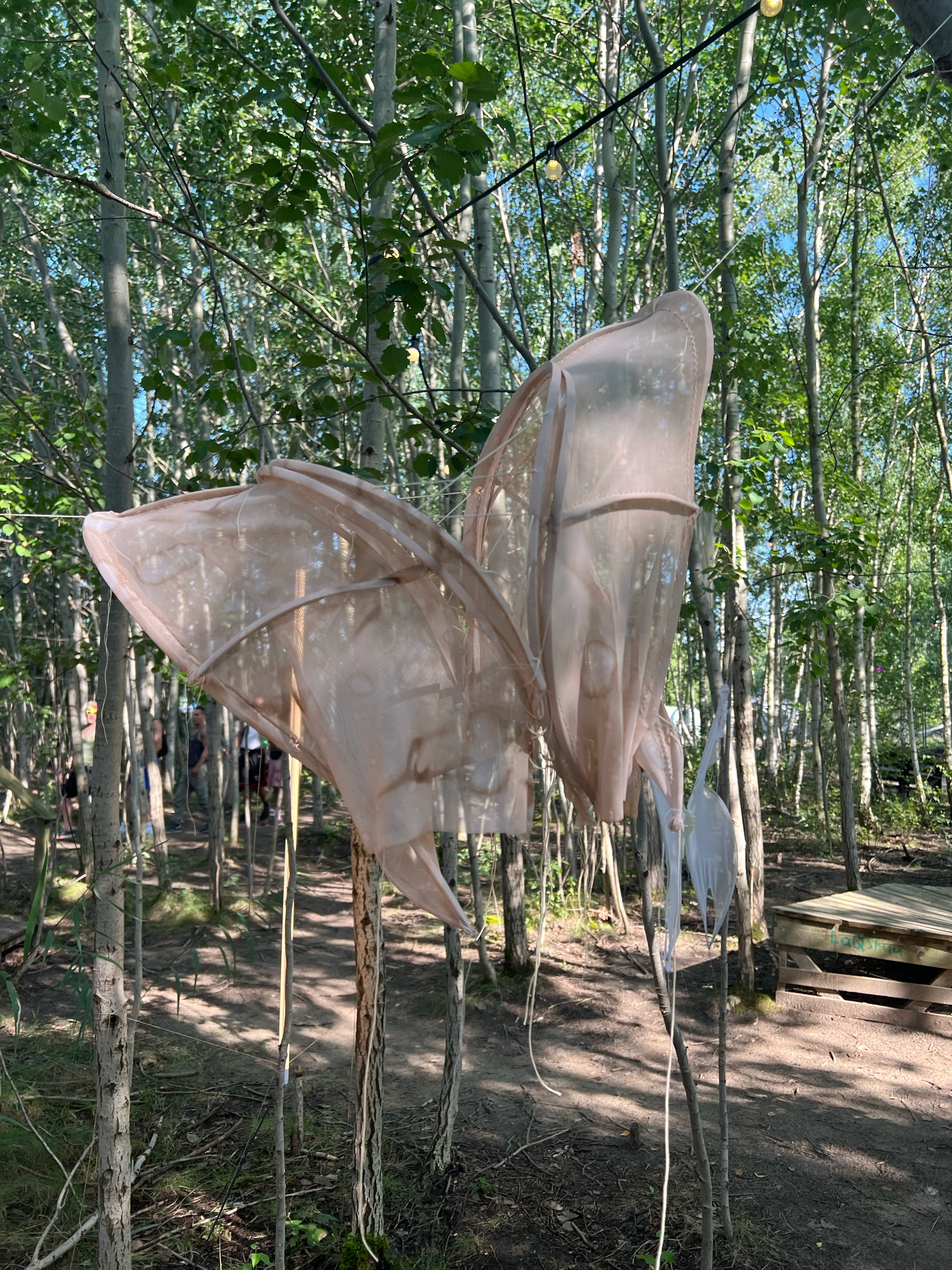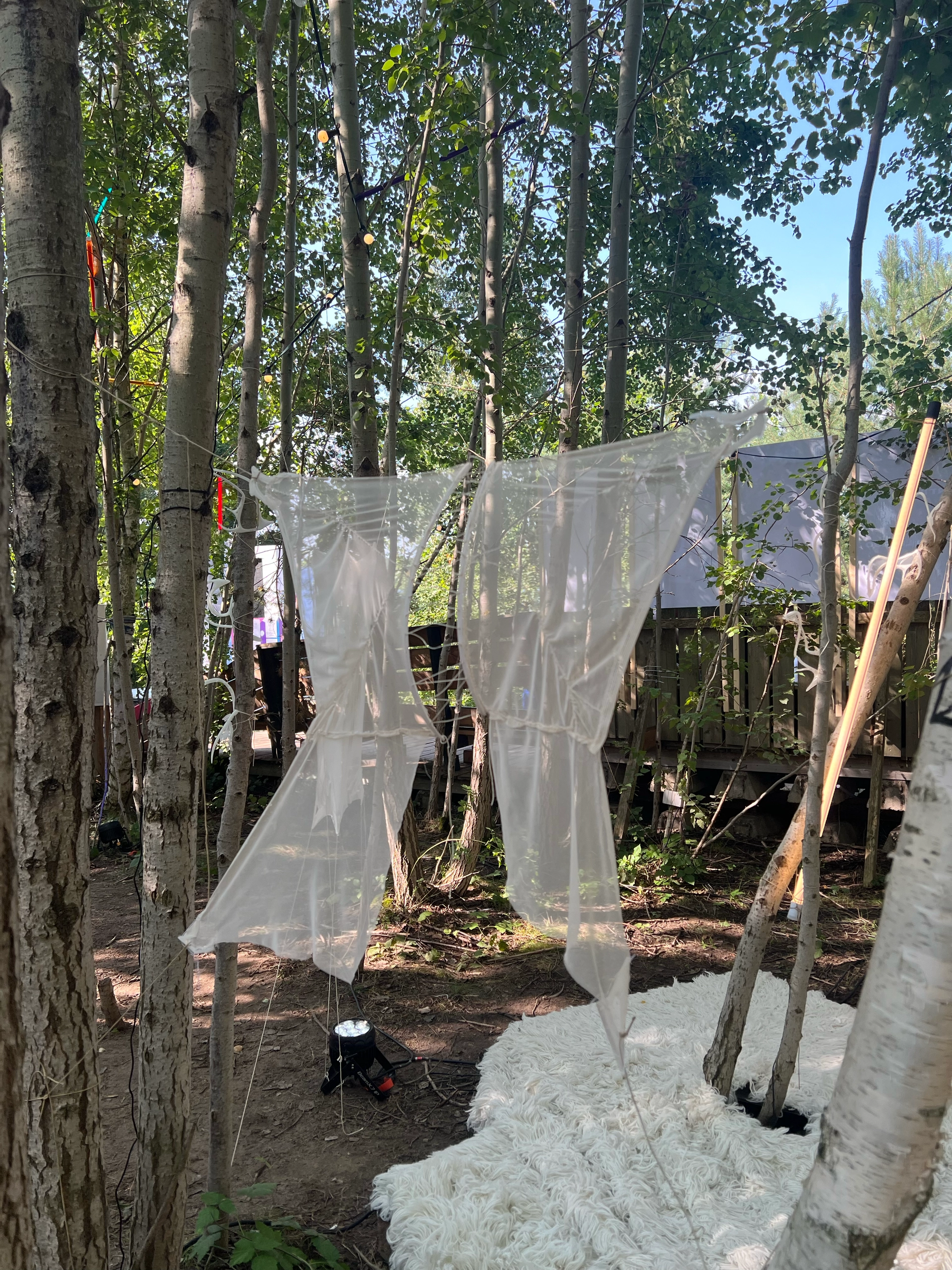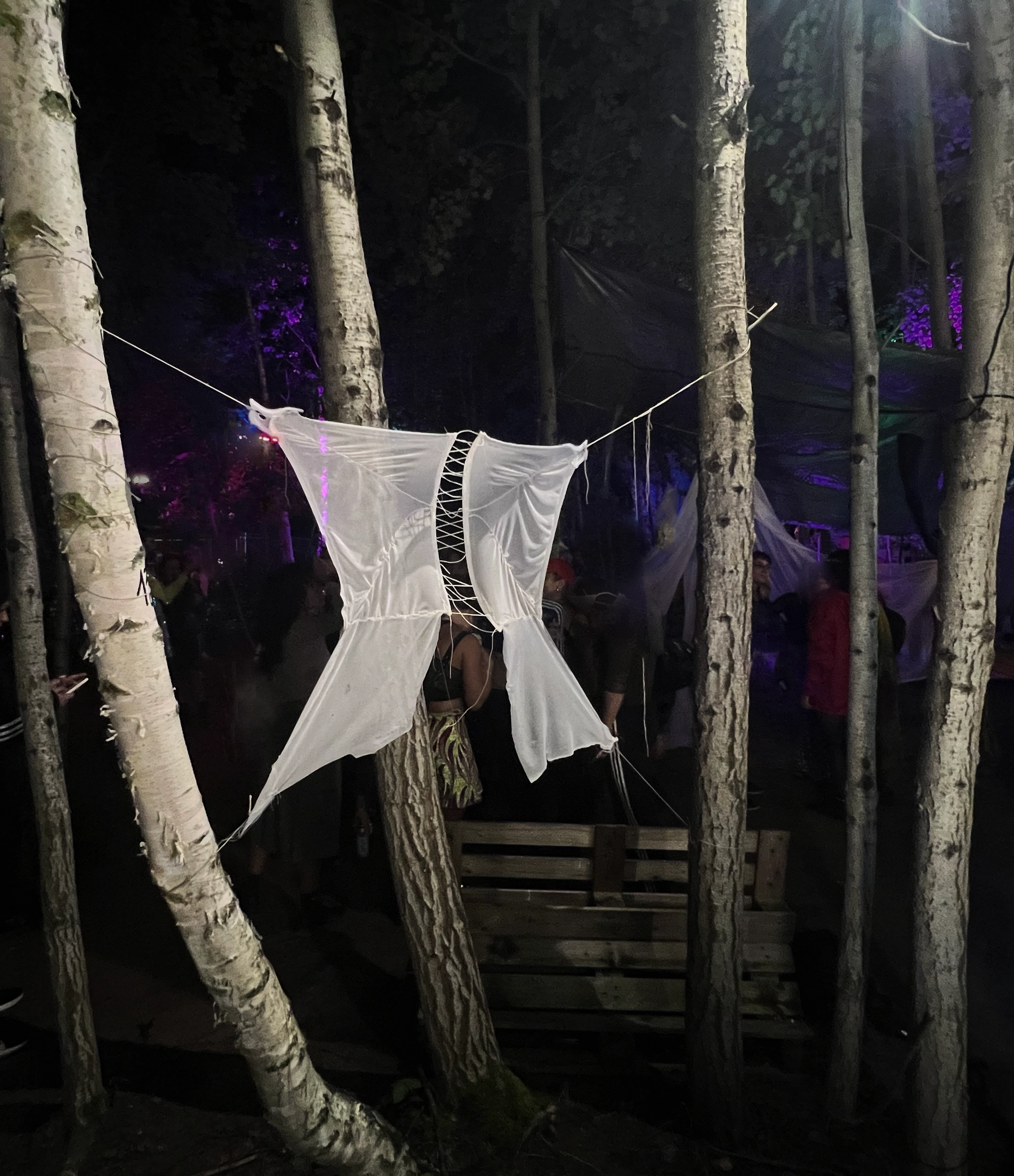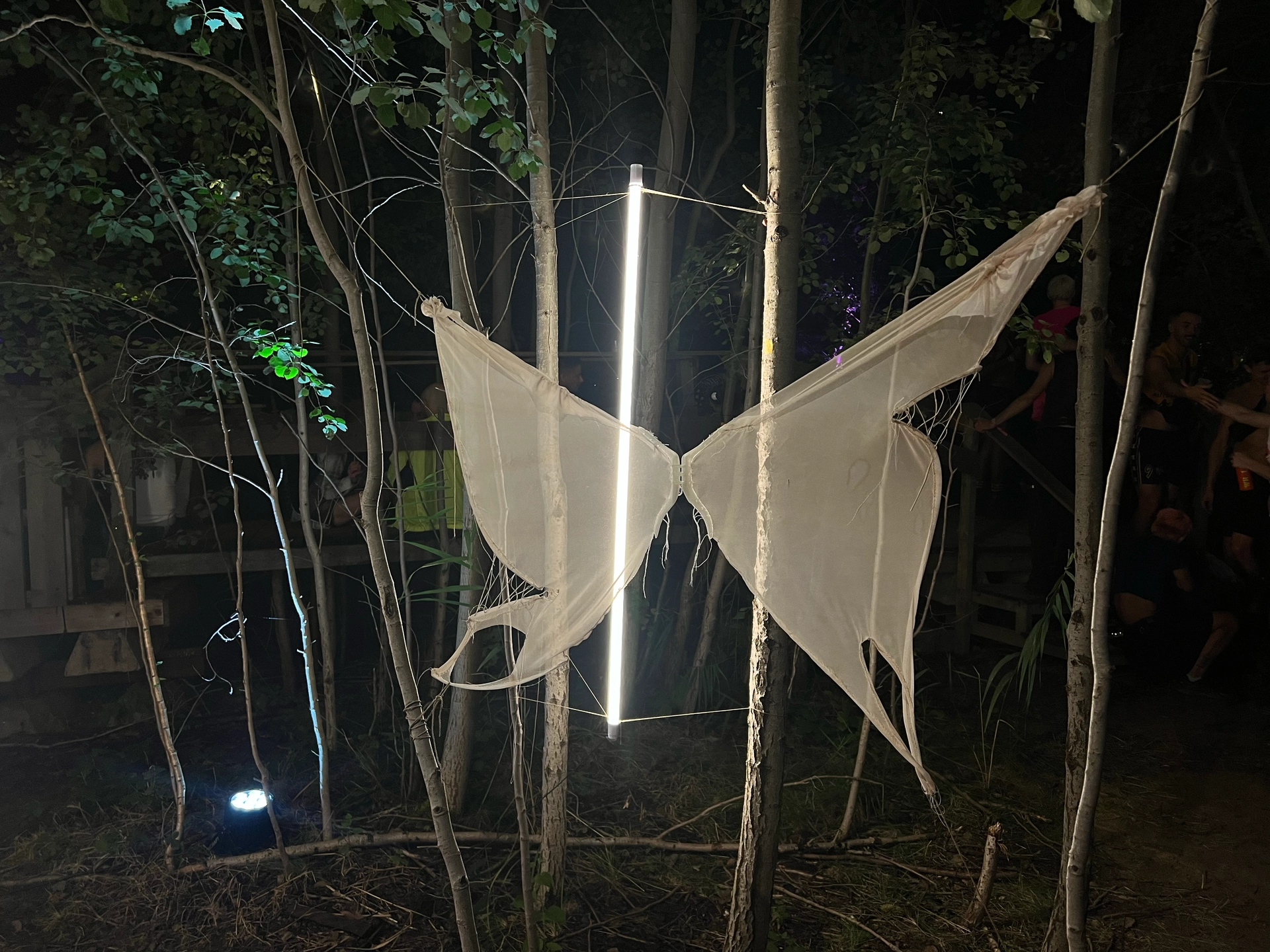Installation in Magma Maria Art Space in Offenbach
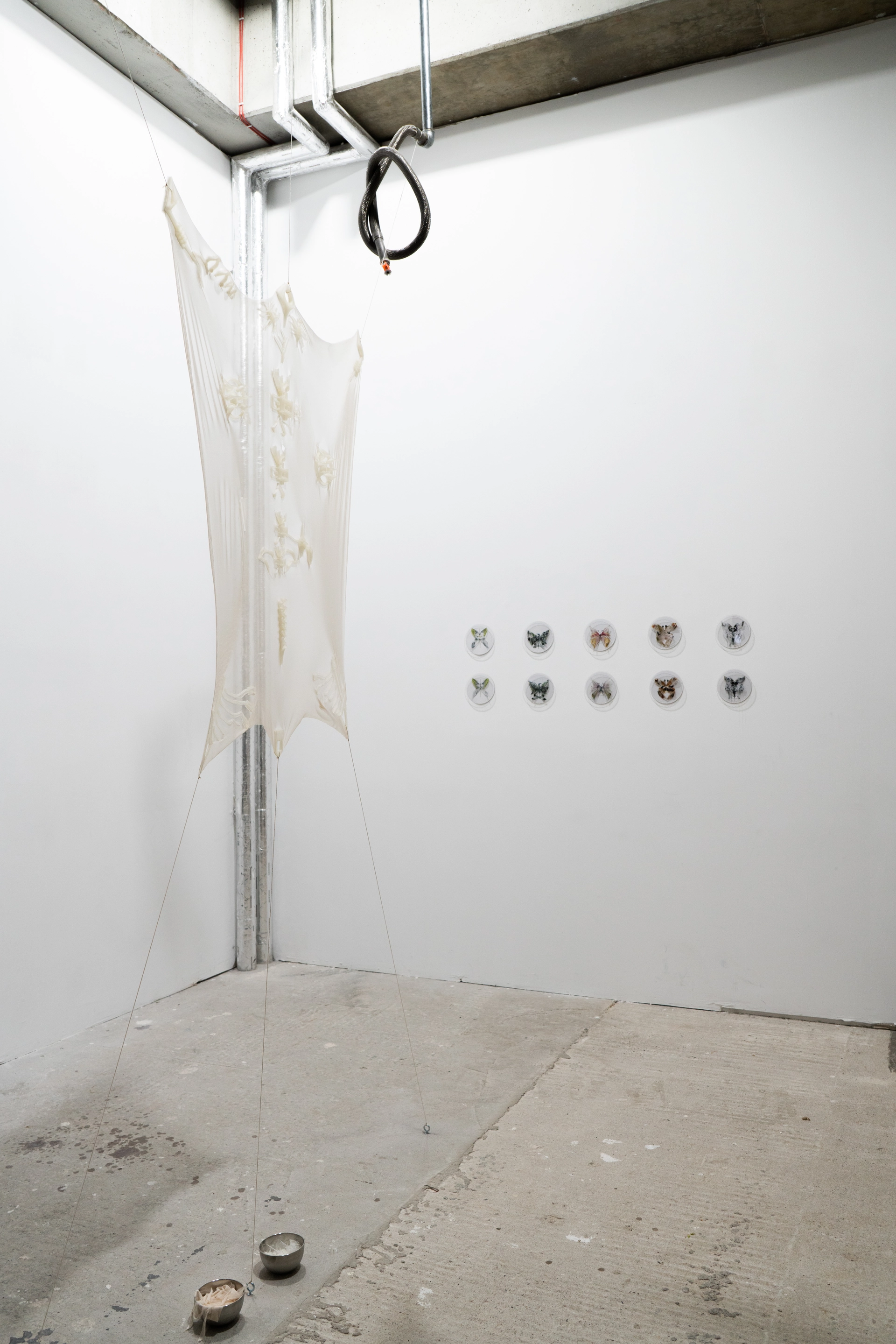
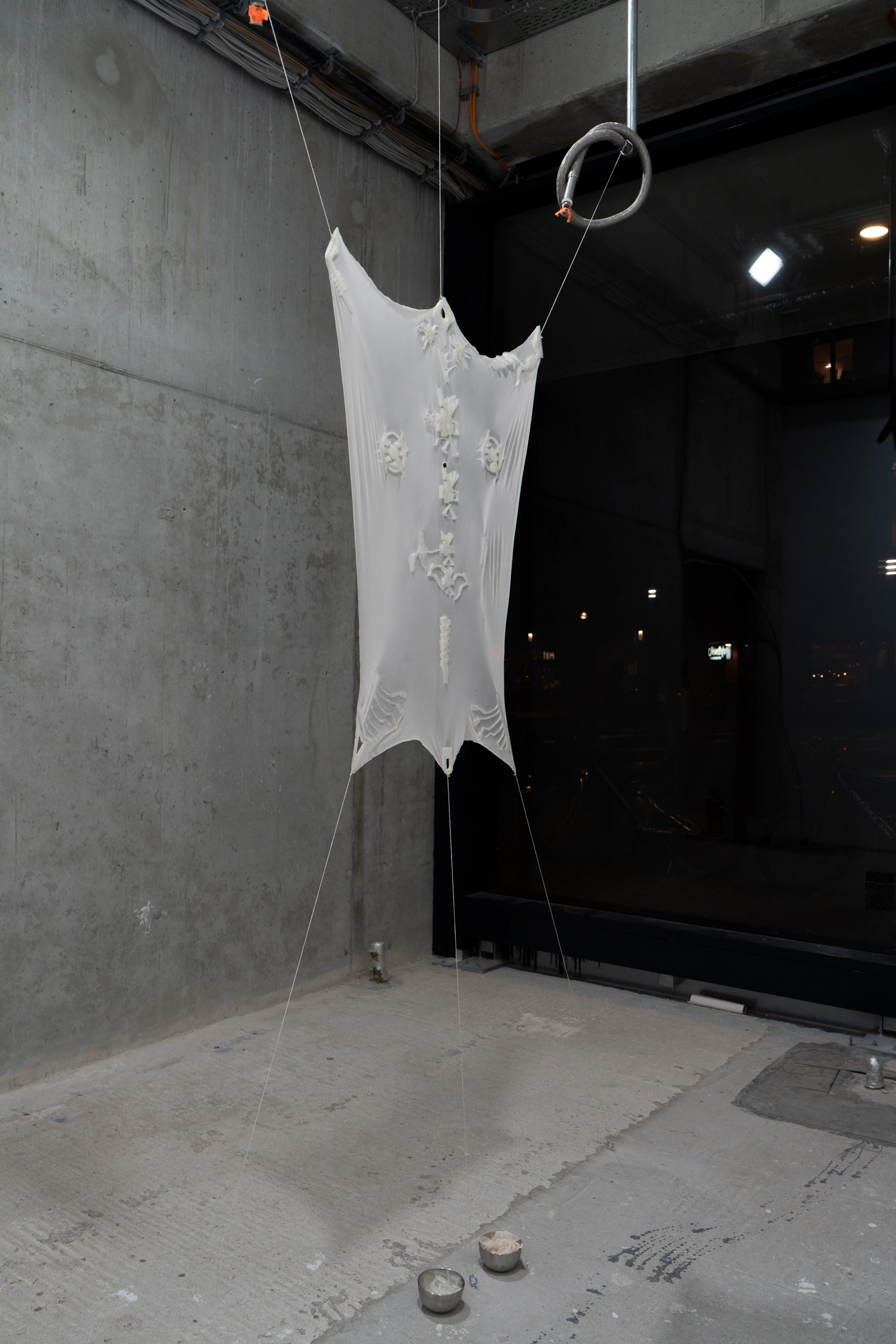
Mechanical-technical shapes printed into a nylon net with a 3D printer. The net resembles peeled and stretched skin, evoking the image of a body or stripped flesh. It is permeable and interwoven with an ornamental structure. From the shells beneath the skin, it either feeds from them, or the skinned parts fall into it
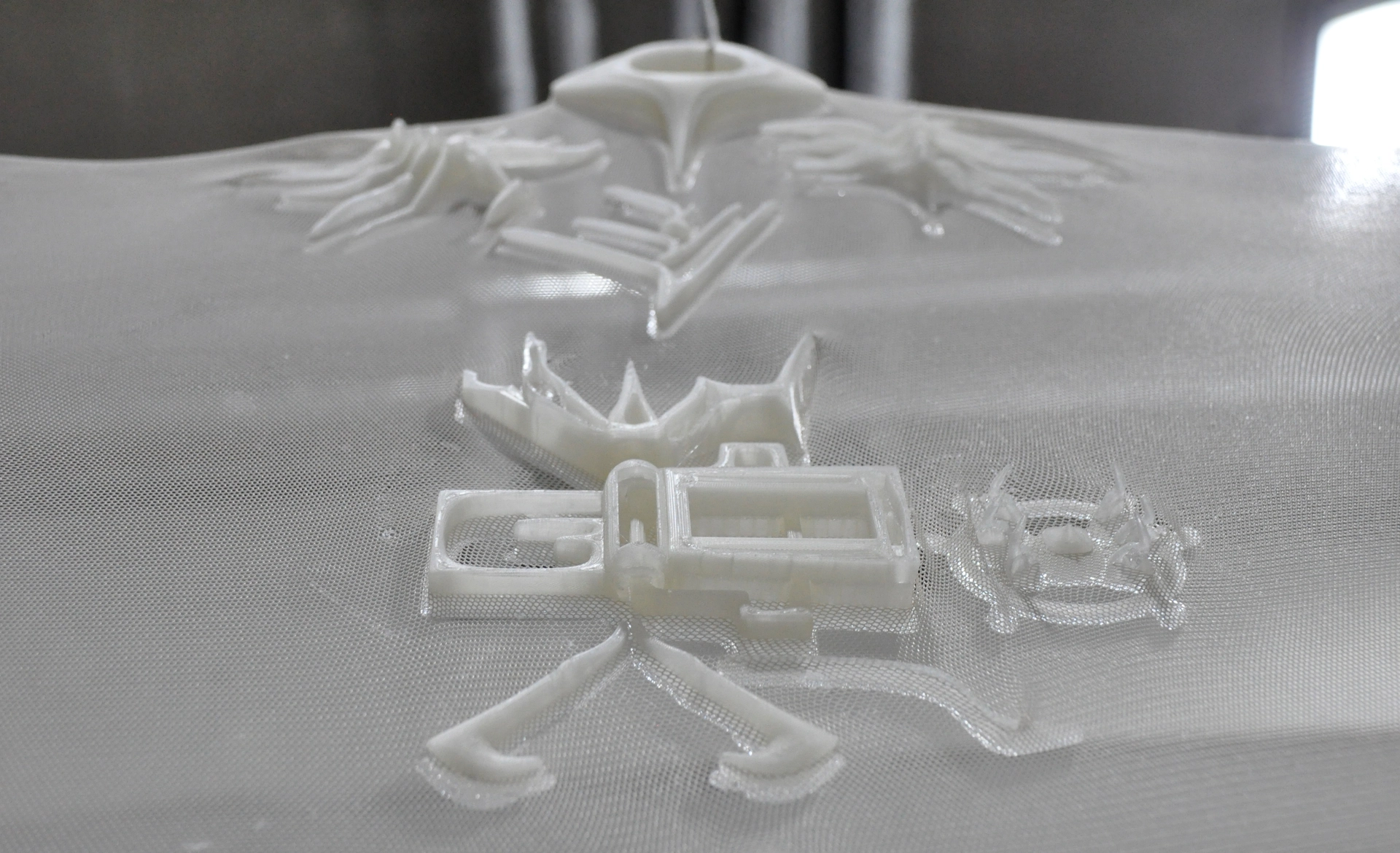
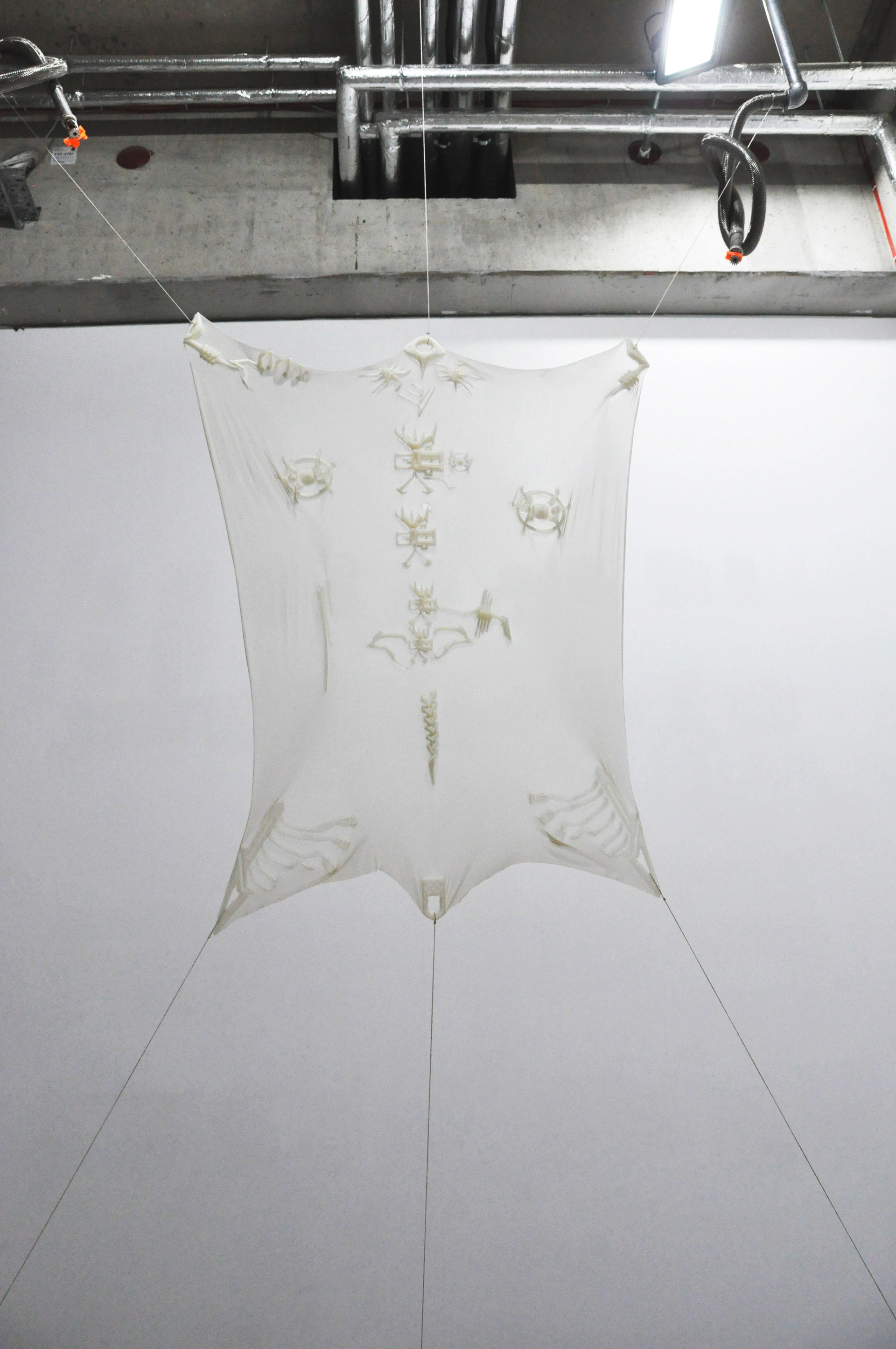
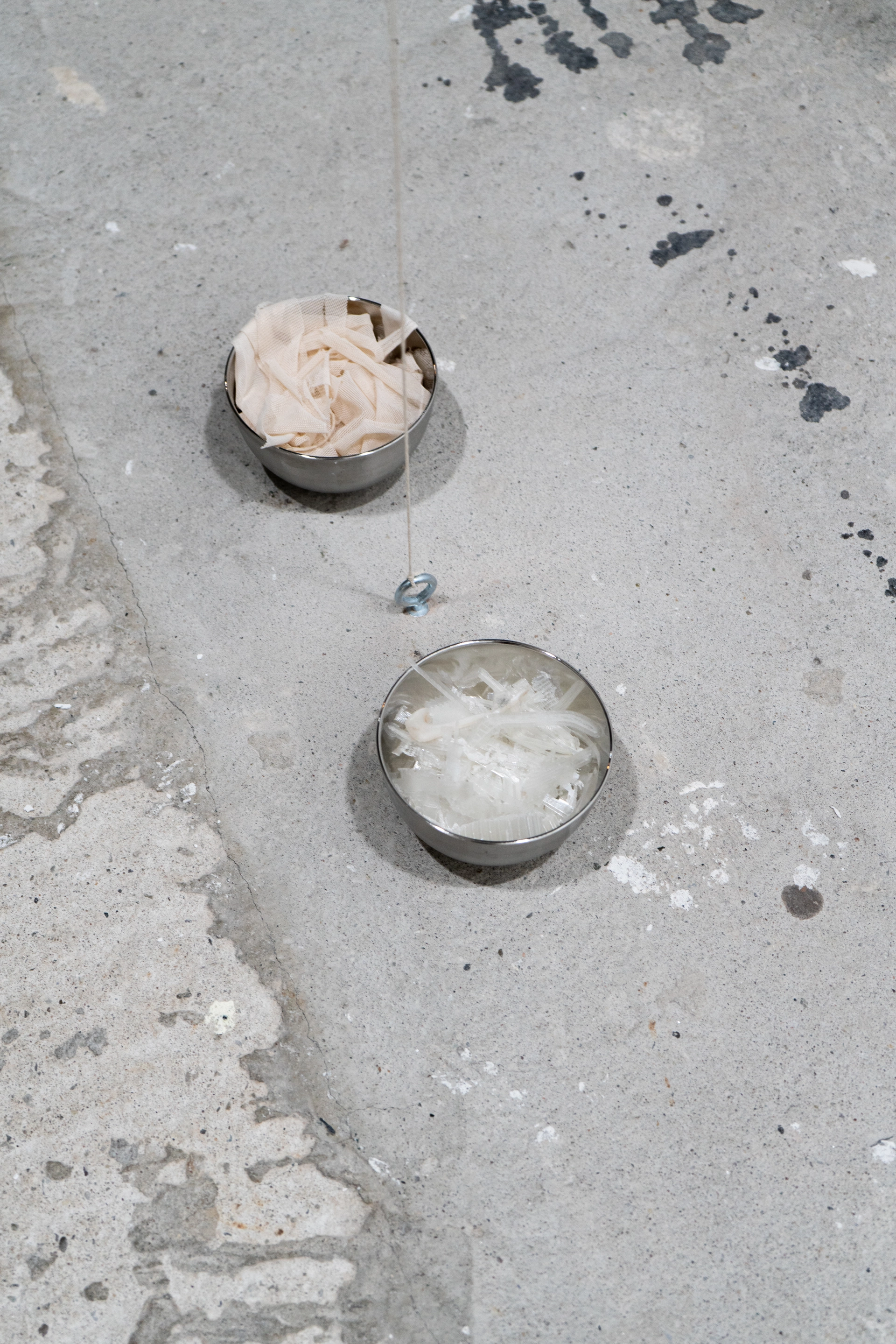

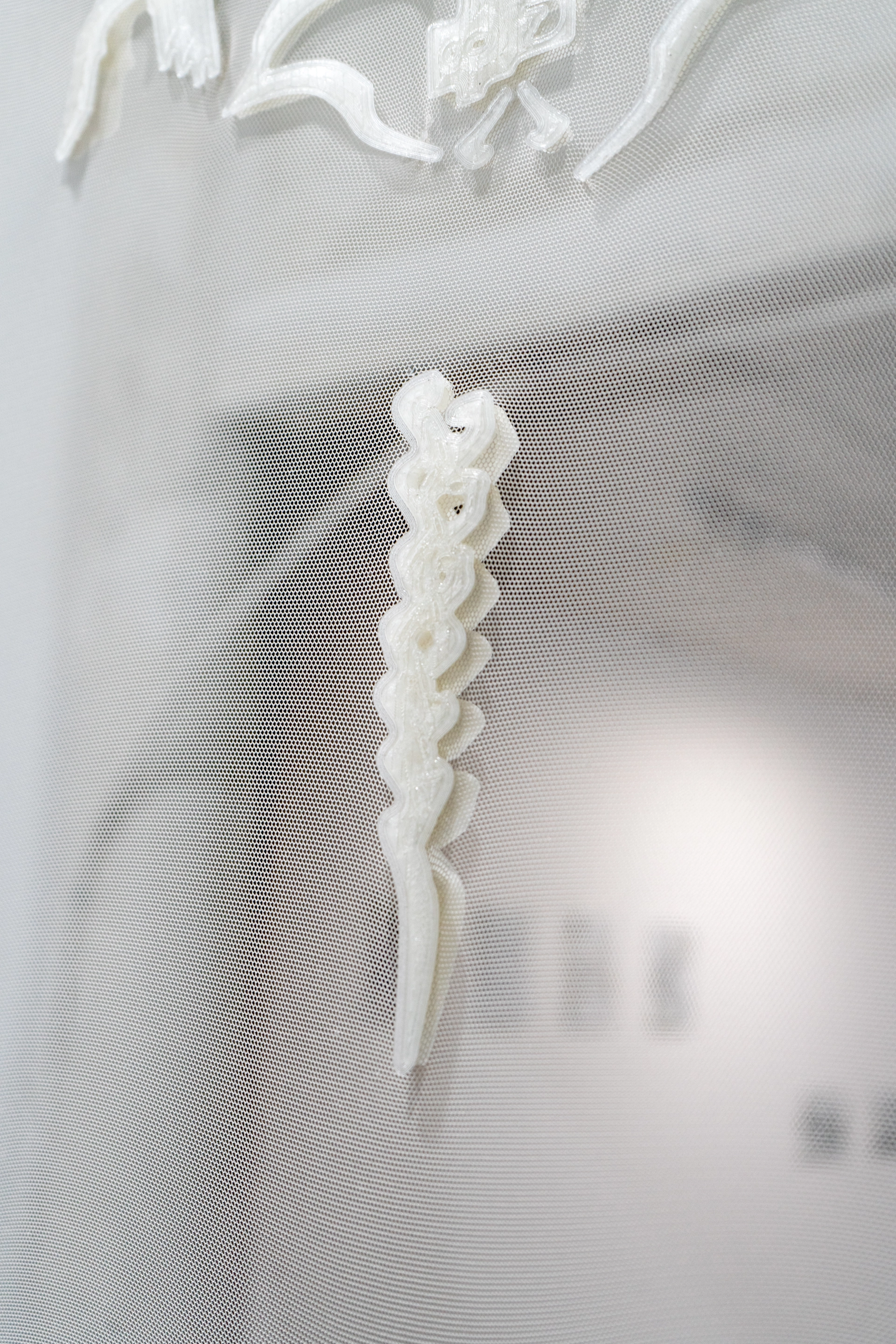
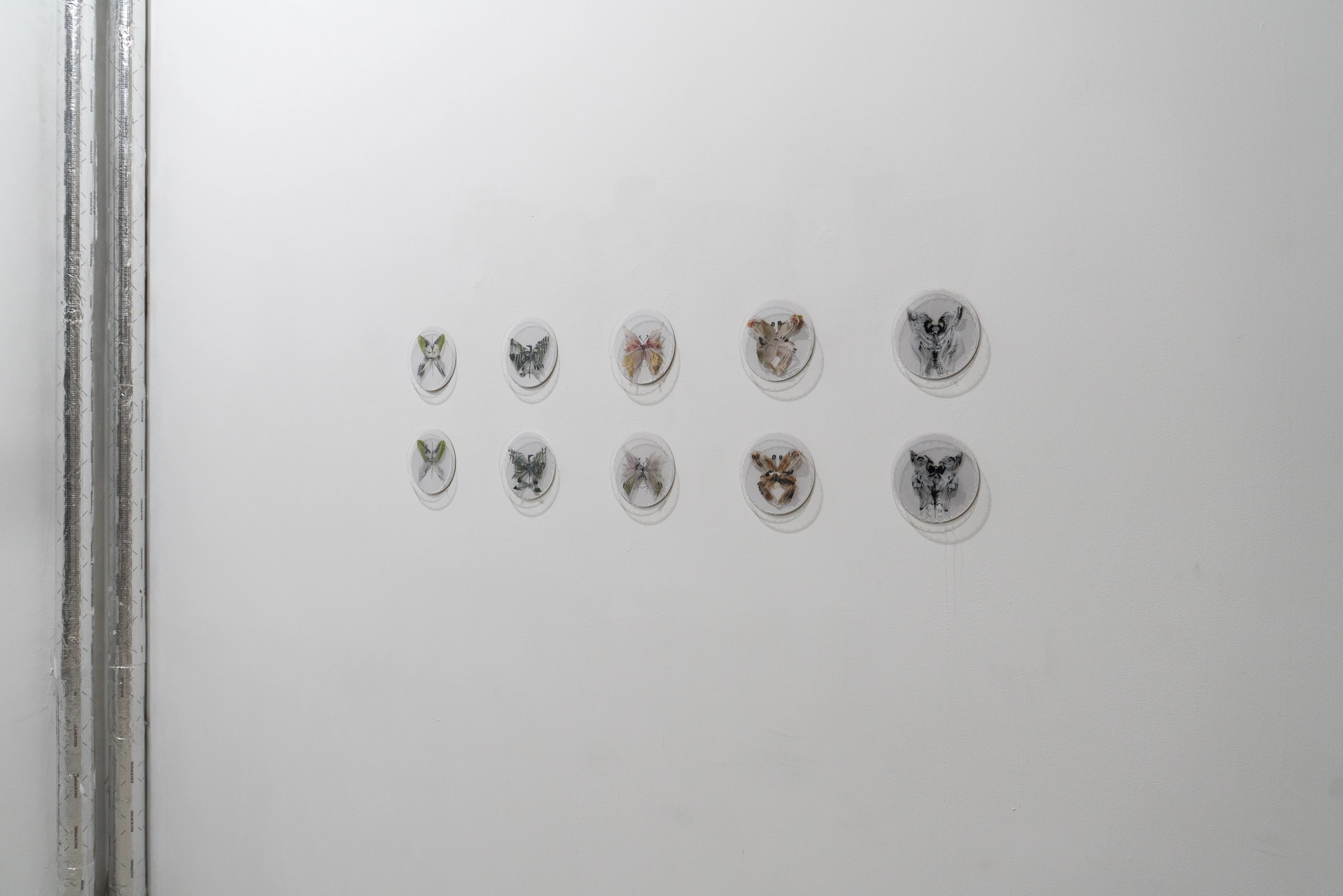
The installation was developed alongside my thesis and was inspired by it. It explores queer utopias and the transformative potential of art to challenge prevailing aesthetics, which are shaped by the constant repetition of certain structures that appear natural to us. I discussed these ideas in conversation with theorists such as José Esteban Muñoz, Sara Ahmed, and Timothy Morton, and their writings on queer utopia, orientation, and the critique of normative aesthetics. The work uses cartography to describe the one-dimensionality of the heteronormative world.
To challenge these destructive conditions, it is important to understand their methods. I examined the processes and patterns through which aesthetics and power structures emerge. Objects like maps or butterfly collections represent systems of control, classification, and display. They are symbols of colonial and patriarchal order.
With the presented collection, I wanted to aestheticize exactly this violence. It shows something beautiful once alive, now locked behind glass and pinned in place. A collection organizes and defines, echoing colonial and patriarchal thinking. At the same time, the butterflies hold the potential for transformation and the possibility of escaping rigid categories. For me, they stand for queerness, tenderness, and the ongoing process of metamorphosis. In my imagination, they break free from the collection at night and fight back.
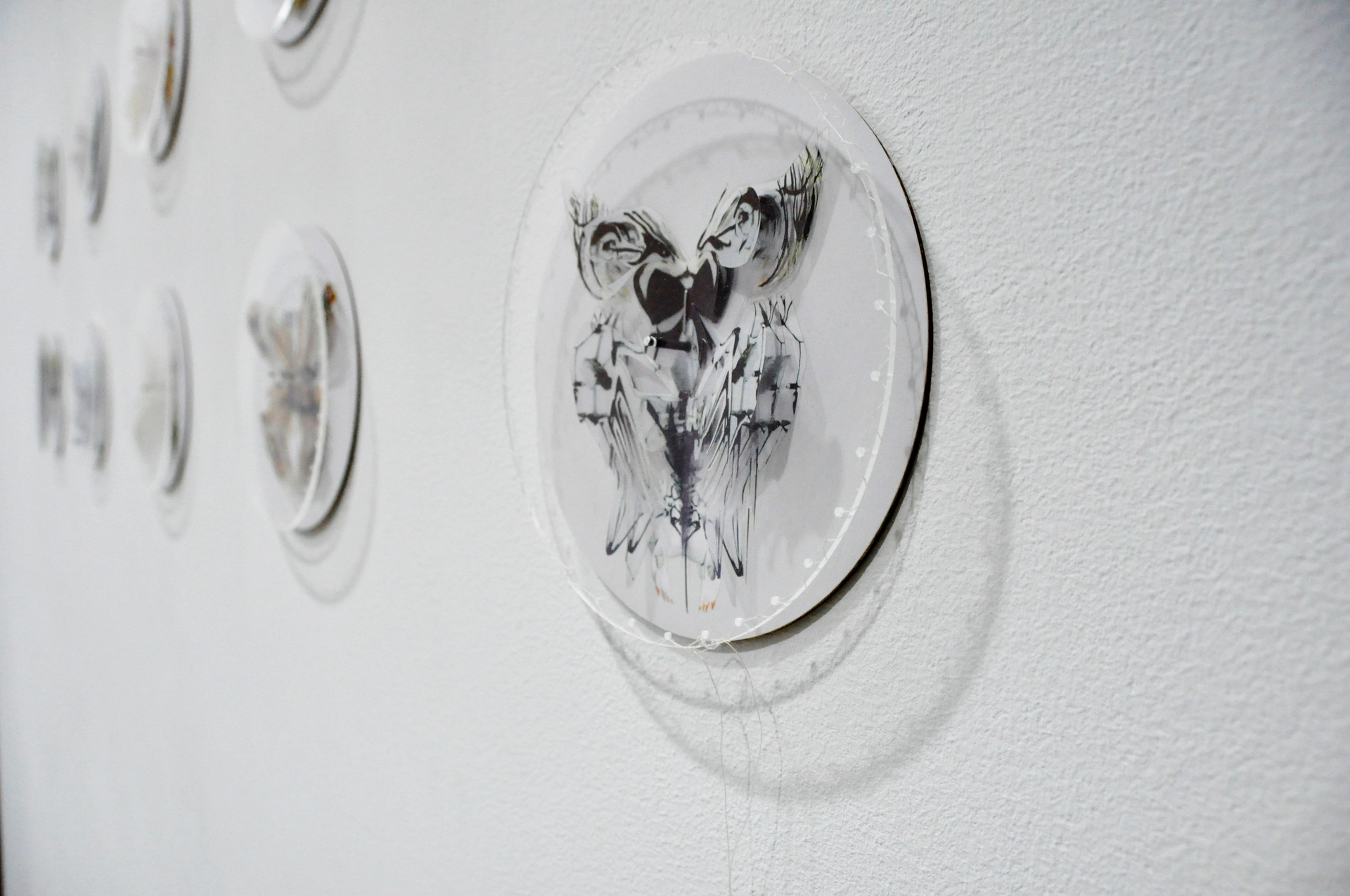
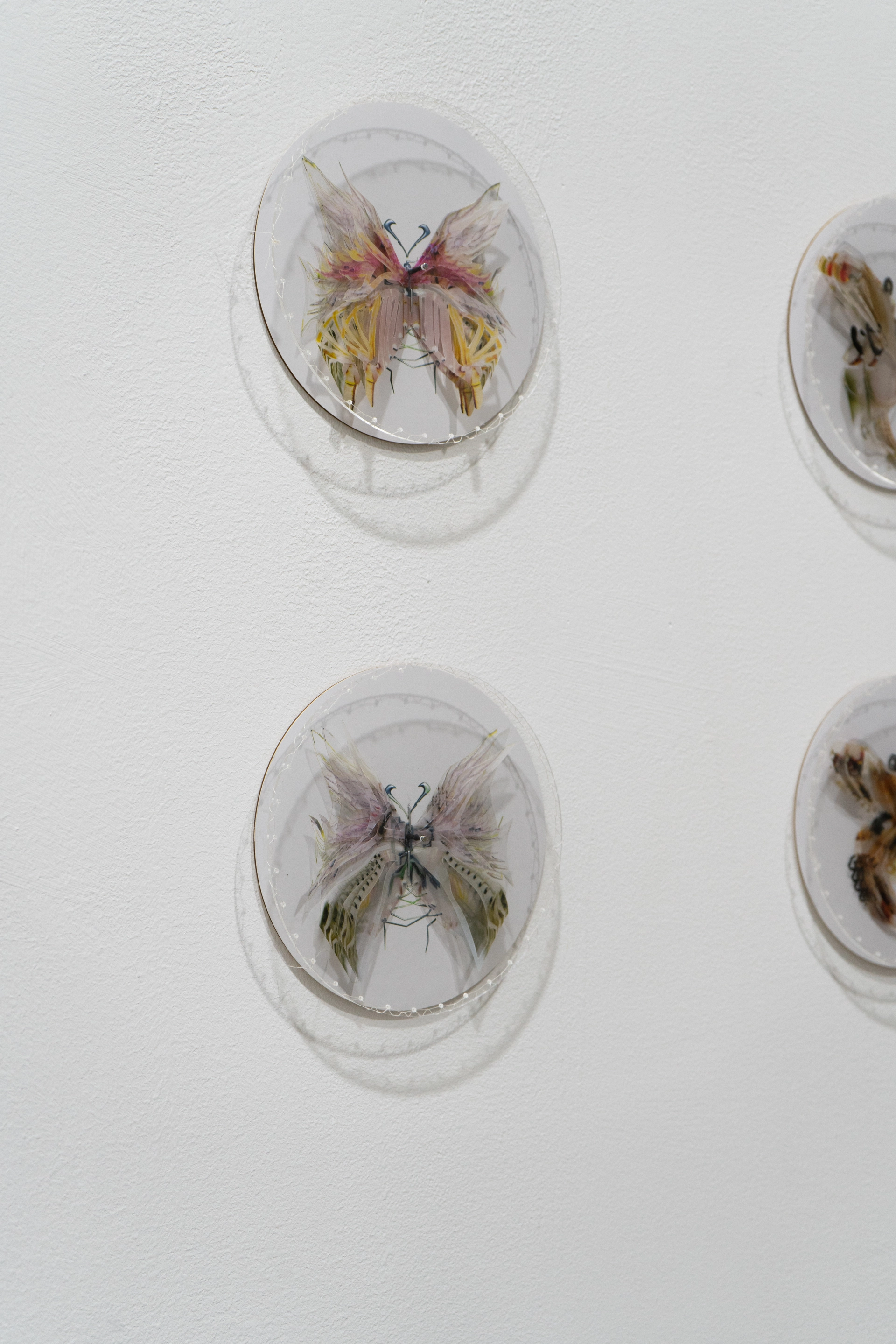
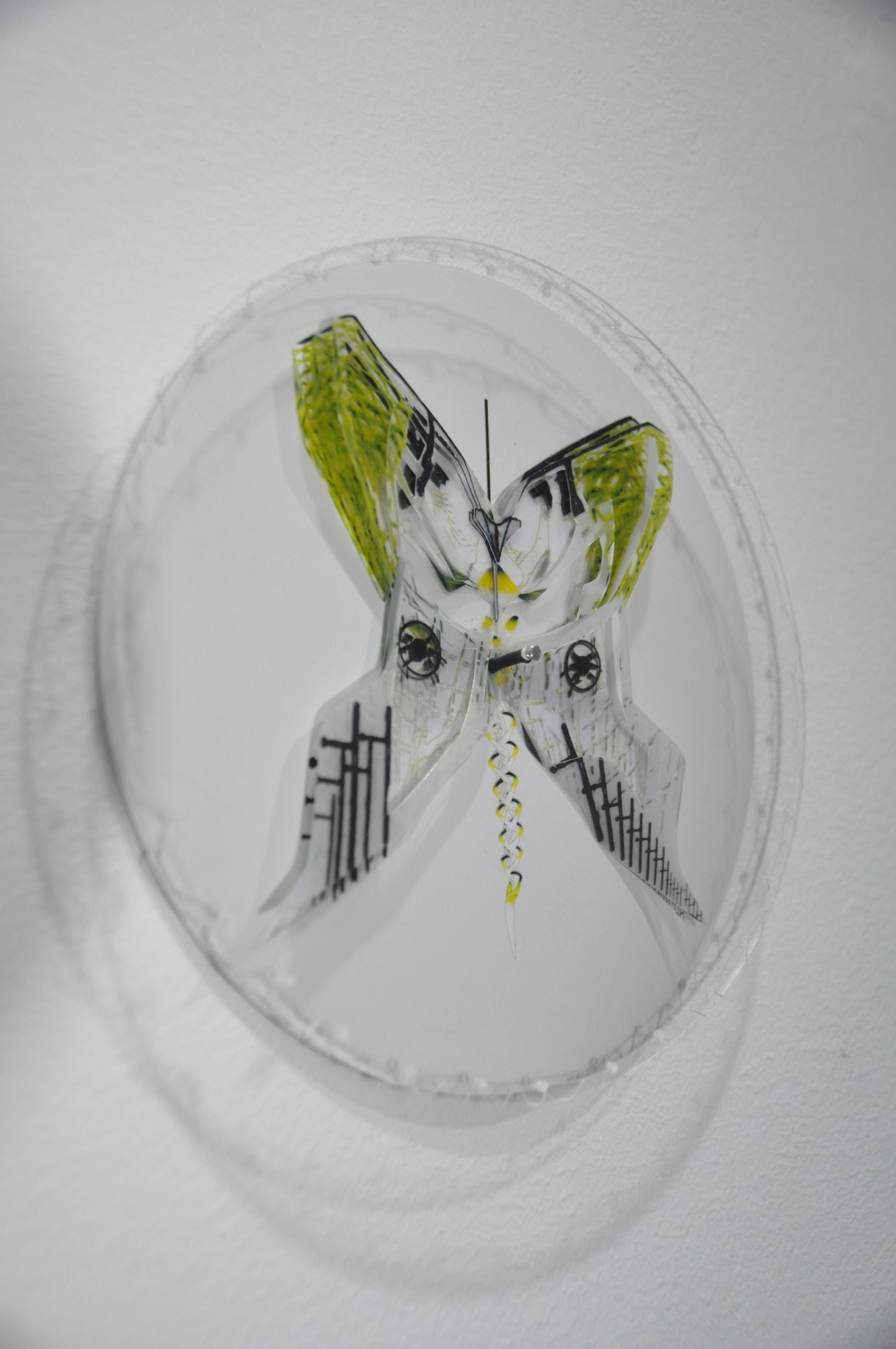
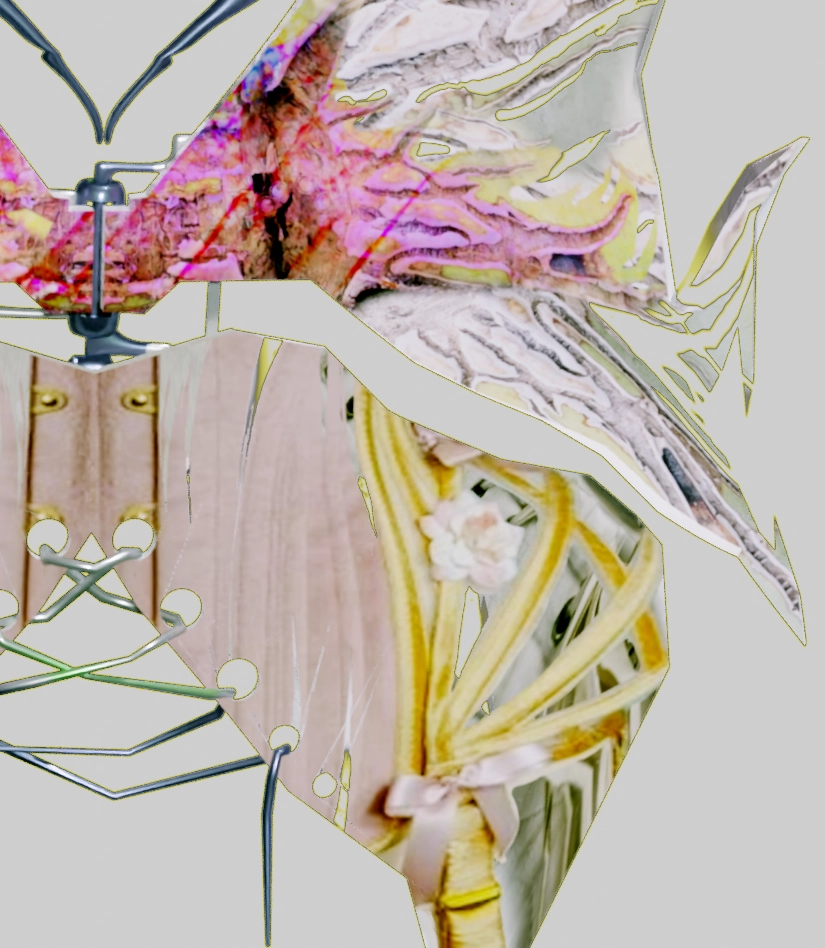
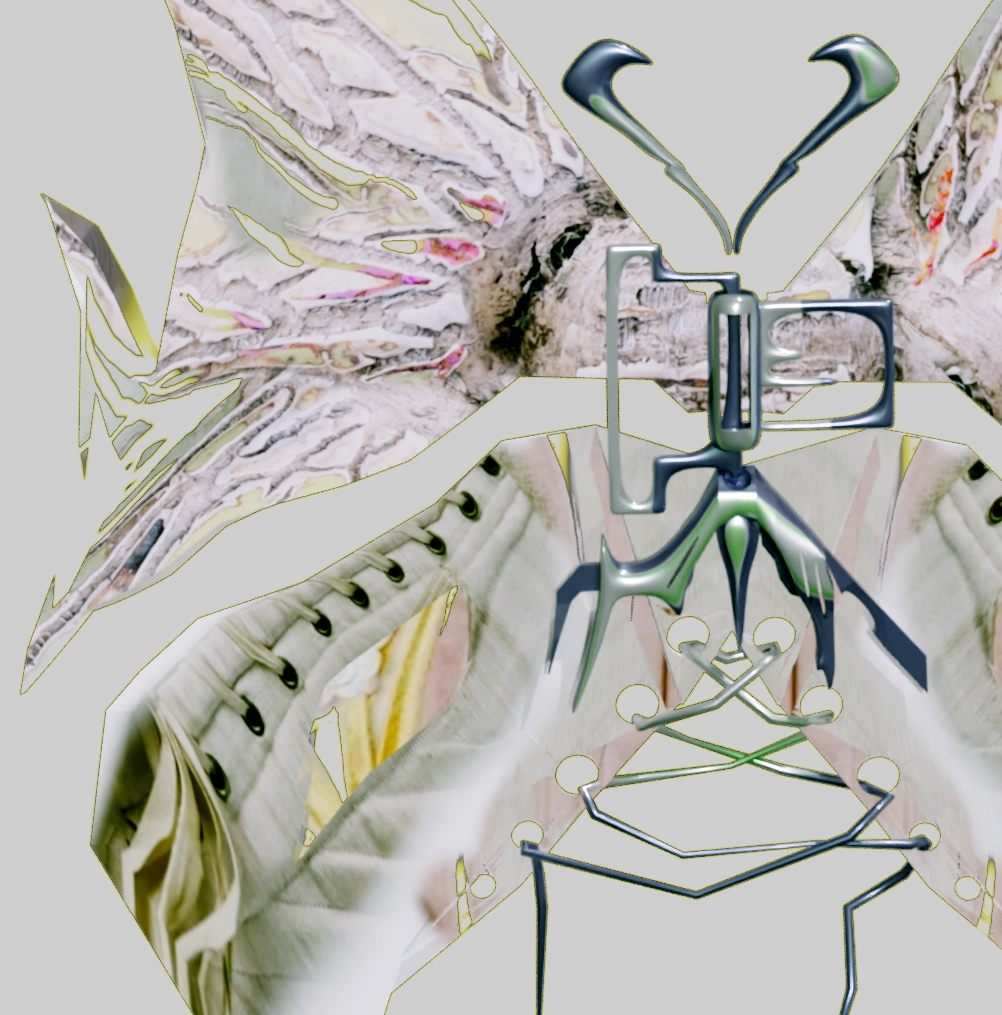
The three-dimensional forms can be shown as flat pattern templates or maps made of polygons that describe the surface of the body. By reducing them to this function, by seeing the form as one-dimensional, I can paint on them, project images onto them, and stamp them. These surfaces become projection sites for external ideas and ideologies.
Images are projected onto the butterflies, and they are marked with patterns. These are not neutral bodies; they are inscribed by memories and power structures, leaving behind scars or tattoos.
